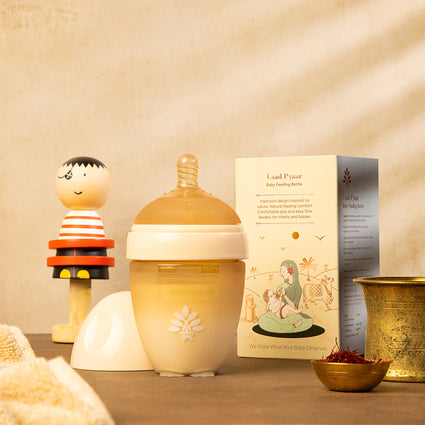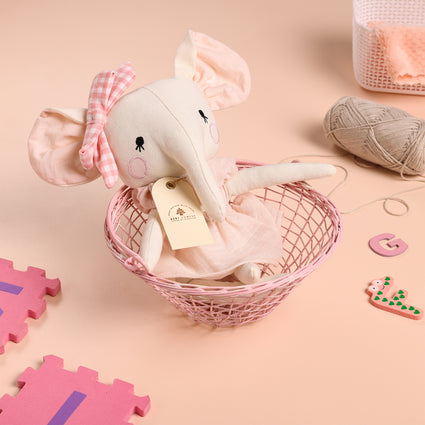Baby Care & Parenting Blogs

Understanding Your Menstrual Cycle and Ovulation
Understanding your menstrual cycle and ovulation is key to mastering fertility and health. Whether planning a pregnancy or monitoring your body, this guide breaks it down simply. From phases to tracking methods, we’ll help you navigate this natural rhythm with confidence and care.
What is the Menstrual Cycle?
The Menstrual Cycle and Ovulation define the time from the first day of one period to the first day of the next. A typical cycle lasts between 21-35 days, with 28 days being the average. Using a Period and Ovulation Tracker can simplify understanding these phases:
- Menstrual Phase: Shedding of the uterine lining, leading to bleeding (3-7 days).
- Follicular Phase: The body prepares for ovulation by developing follicles in the ovary.
- Ovulation Phase: A mature egg is released from the ovary, usually mid-cycle.
- Luteal Phase: The body prepares for pregnancy or starts a new cycle if fertilization doesn’t occur.

How to Track Your Cycle for Pregnancy Planning?
Accurately tracking your Menstrual Cycle and Ovulation is crucial for pregnancy planning. Begin by recording your cycle's start date, the first day of your period, with a Menstrual Cycle Calculator. Note cycle length, typically 21-35 days. Ovulation, when an egg is released, usually occurs 12-14 days before your next period. Monitor basal body temperature (BBT) for a slight rise post-ovulation. Observe cervical mucus changes; clear, stretchy mucus indicates fertility. Utilize ovulation predictor kits (OPKs) to detect luteinising hormone (LH) surge, signalling impending ovulation. Combine these with a Period Ovulation Tracker for accurate fertility window identification.
You Might Like This: Pregnancy Conception Calculator
What is Ovulation?
Ovulation occurs when a mature egg is released from the ovary, typically around the midpoint of the cycle. The egg survives for 12-24 hours, but sperm can live in the female body for up to five days. This means the days leading up to ovulation, tracked via a Fertile Days After Period Calculator, are also fertile and crucial for conception.
How to Calculate Ovulation?
Knowing your Menstrual Cycle and Ovulation helps in planning conception effectively. A Menstrual Cycle Calculator can estimate your cycle length easily:
- Track Your Cycle Length: Count the days from the first day of your period to the first day of the next period. A normal cycle is between 21-35 days.
- Determine Your Ovulation Day: Ovulation typically occurs about 14 days before your next period. For example, if your cycle is 28 days, ovulation occurs around day 14.
- Identify Your Fertile Window: The most fertile days, pinpointed by a Fertile Days After Period Calculator, are the five days leading up to ovulation and the ovulation day itself.

Signs of Menstrual Cycle and Ovulation
Recognizing ovulation signs is key to predicting your fertile window. During this time, you may notice several changes in your body. Cervical mucus typically becomes clear, stretchy, and slippery, resembling egg whites—a sign tracked by the Best Period and Ovulation Tracker. After ovulation, your basal body temperature (BBT) may show a slight rise. Ovulation test kits can also be used to detect the surge in luteinizing hormone (LH), which triggers ovulation. Some women may experience mild pelvic pain, known as Mittelschmerz, lasting a few hours to a day. Additionally, increased libido and energy levels are common indicators of ovulation.

Using an Ovulation Calculator
An ovulation calculator estimates your most fertile days based on your menstrual cycle ovulation. While it provides a general idea, combining it with physical ovulation signs and a Period Ovulation Tracker enhances accuracy. These calculators, especially an Ovulation Calculator for Irregular Periods, are useful but should be used alongside other tracking methods for the best results.

How Accurate is Ovulation Prediction?
Ovulation prediction methods vary in accuracy depending on your menstrual cycle and ovulation patterns. Here’s a breakdown with tools like the Most Accurate Period Tracker Online:
Ovulation Calculators: Provide estimates but do not guarantee exact ovulation timing,as cycle lengths can fluctuate.
Basal Body Temperature (BBT): About 75-80% accurate in confirming ovulation after it has occurred.
Cervical Mucus Observation: Can be 70-90% accurate when tracked consistently with a Period and Ovulation Tracker.
Ovulation Predictor Kits (OPKs): Detect LH surges and are about 99% accurate in predicting ovulation within 24-36 hours. Using multiple methods, including an Ovulation Calculator for Irregular Periods, increases reliability. If cycles are irregular, consulting a doctor is recommended.
The Role of Hormones in Ovulation
Hormones are vital as they regulate your menstrual cycle and ovulation seamlessly. . Follicle-stimulating hormone (FSH) initiates egg development within the ovaries. Luteinizing hormone (LH) then triggers the release of a mature egg. Estrogen levels increase before ovulation, resulting in fertile cervical mucus—insights you can gain from the Best Period and Ovulation Tracker. Post-ovulation, progesterone rises, preparing the uterus for potential pregnancy. The optimal time for conception is within the fertile window, which spans approximately six days: the five days preceding ovulation and the day of ovulation itself. Intercourse during this period significantly enhances pregnancy likelihood. Sperm can survive in the female reproductive tract for up to five days, making intercourse before ovulation advantageous.
How to Improve Ovulation Naturally?
Maintaining a healthy menstrual cycle and ovulation involves several key practices. Consume a balanced diet rich in essential vitamins and minerals, including folic acid, zinc, and iron. Effectively manage stress, as elevated stress levels can disrupt hormone balance and postpone ovulation. Maintain a healthy weight, as both underweight and overweight conditions can negatively impact ovulation—track progress with the Most Accurate Period Tracker Online. Engage in regular, moderate exercise to support hormonal equilibrium. Consult a healthcare professional if you experience irregular, excessively painful, or absent menstrual cycles for several months, as these may indicate hormonal imbalances or underlying fertility-affecting conditions. Additionally, seek medical advice if you have been attempting to conceive for over a year, or six months if you are over 35.
Conclusion
Tracking your menstrual cycle and ovulation is essential for understanding fertility. Whether If you are planning to conceive or simply monitoring your health, knowing your fertile window can be highly beneficial. Menstrual cycle calculators and tracking tools provide helpful estimates, but combining multiple methods ensures the best accuracy. If you experience irregularities or difficulty determining ovulation, seeking medical advice is recommended.

What is a Mucus Plug and Why is It Important During Pregn...
Pregnancy is such an exciting time, but it can also bring up a lot of questions. You might start hearing about the mucus plug as your due date gets closer. It might sound a bit weird, but trust me, it's actually really important! Let's take a closer look at what it is, why it's important, and what it means for you as you get ready to meet your little one.
What Is a Mucus Plug?
The mucus plug is a thick, jelly-like substance in your cervix during pregnancy. Its main job is to create a barrier, keeping harmful bacteria and other things out and helping to protect your baby. Think of it as a natural shield that keeps everything safe inside the uterus. It's made of cervical mucus, and its colour and texture can change as your pregnancy progresses.
Usually, the mucus plug is clear, pink, or a little brown. It can be a small amount, or it might be more noticeable, depending on your body. Some women don't even notice when it comes out, while others may see it all at once. Either way, it's totally normal!
Why Is the Mucus Plug Important During Pregnancy?
The mucus plug plays a key role in protecting your baby. It acts as a barrier against infections, stopping harmful bacteria from entering the uterus. Your immune system is already working hard to keep both you and your baby safe, and the mucus plug adds an extra layer of defence.
As your body starts preparing for labour, your cervix begins to soften and dilate, which can cause the mucus plug to come out. This is a sign that your body is getting closer to labour. It's totally normal, though it can be a bit surprising for first-time moms. But don't stress—this is just a sign that things are moving in the right direction!
When Does the Mucus Plug Come Out?
The mucus plug can come out anytime in the last few weeks of pregnancy. For some women, it happens days or even weeks before labour begins, while for others, it might come out right when labour starts. Losing the mucus plug is one of the early signs that your body is getting ready for childbirth, but it doesn't always mean that labour is just around the corner. It's simply your body's way of preparing for the big day!
Signs of Losing the Mucus Plug
When you lose the mucus plug, you might notice it on your underwear or on the toilet paper after using the bathroom. It can come out all at once or in bits over time. Here's what to look out for:
- You might see a small blob of mucus that's clear, pink, or slightly tinged with blood.
- It could feel like a gel-like substance when you wipe it.
- Some women describe it as having a thick, snotty texture.
If you notice any of these signs, keep an eye on it and see how things go. It's helpful to track any changes, so you'll know what to expect as labour approaches!
What Happens After You Lose the Mucus Plug?
Losing the mucus plug doesn't mean labour is about to start right away. It just means your cervix is starting to get ready for delivery. For some women, labour may start within a few days, while for others, it might take a week or more. Remember, losing the mucus plug is only one part of the process.
Once it's gone, though, your cervix is a little more exposed to infection. So, it's important to take good care of yourself and pay attention to any unusual symptoms, like a fever or abnormal discharge, as these could be signs of an infection. Always reach out to your doctor if you're concerned!
When to Call Your Doctor
Losing the mucus plug is usually normal, but there are a few situations where you should definitely contact your doctor. If something doesn't feel right, don't hesitate to reach out. Here's what to watch for:
-
If you lose the mucus plug early (before 37 weeks), it's important to let your healthcare provider know.
-
If the mucus plug comes with heavy bleeding or cramping.
-
If you notice a fever or a foul-smelling discharge after losing the mucus plug.
These could be signs of an infection or premature labor, and your doctor will want to be informed to make sure everything's okay. Always trust your instincts and check in with your doctor if you're concerned!
Common Myths About the Mucus Plug

There are a lot of myths about the mucus plug that can make things feel more confusing than they need to be. Let's clear up a few of them:
-
Myth #1:
Losing the mucus plug means labor is about to start.
Fact: It's just one sign that your body is preparing for labor, but it doesn't mean you'll go into labor right away.
-
Myth #2:
You'll always notice losing your mucus plug.
Fact: Many women don't even notice it when it happens, and it can come out without you realizing it.
-
Myth #3:
The mucus plug always comes out in one big chunk.
Fact: Sometimes, it comes out gradually or in pieces over time.
So, don't stress if things don't happen exactly as you've heard—everyone's experience is different!
How to Care for Yourself After Losing the Mucus Plug
After losing the mucus plug, your cervix is a bit more exposed, so it's important to take extra care of yourself. Here are a few tips to keep in mind:
-
Maintain good hygiene.
Wash your hands thoroughly and avoid inserting anything into your vagina unless your doctor gives the go-ahead. -
Track any changes.
Keep an eye on things like increased discharge, bleeding, or cramping. -
Rest and stay hydrated.
Taking care of yourself with plenty of rest and water helps your body get ready for the next steps in labour.
If you're ever unsure about something, always reach out to your doctor. It's better to be safe than sorry, especially if it's your first pregnancy!
Related Read: Do’s & Don'ts in the Third Trimester
Conclusion
The mucus plug might seem a little strange at first, but it's an important part of your pregnancy journey. It's your body's way of protecting your baby and getting ready for labor. Losing the mucus plug can be a bit surprising, but it's completely normal and just a sign that things are moving along.
By knowing what to expect and how to take care of yourself afterward, you'll feel more confident as you approach the big day. Always listen to your body, and don't hesitate to reach out to your doctor if anything feels off. You've got this—just one step closer to meeting your little one!

What Is Pregnancy Nose? Causes, Symptoms, and Remedies
Pregnancy is such an exciting time, but it also brings some changes that can be a bit surprising. One of those changes is something called pregnancy nose. If you're expecting, you might notice your sense of smell becoming super sensitive, or your nose might feel a little stuffy or congested. It can definitely catch you off guard, and you might be wondering if it's normal. Don't worry – it totally is! You're not alone in this.
In this article, we'll break down what pregnancy nose is, why it happens, the symptoms you might experience, and how to manage it.
What Causes Pregnancy Nose?
During pregnancy, your body goes through a ton of changes, and your nose is no exception! One of the main culprits behind pregnancy nose is a hormonal surge, especially the increase in estrogen. This hormone causes your blood vessels to dilate, including the ones in your nasal passages. As a result, your nasal passages can swell, leading to more mucus production and that feeling of congestion we all dread.
But that's not all—another factor is the increase in blood volume during pregnancy. Your body is working overtime to support you and your little one, which means more blood is directed to different areas, including your nose. This extra blood flow can cause more swelling and irritation in your nasal passages, making breathing harder. Plus, the hormonal changes that trigger pregnancy nose can also heighten your sense of smell, which is why certain scents may seem stronger or even more unpleasant.
Symptoms of Pregnancy Nose
The symptoms of pregnancy nose can vary from one woman to another. Here are some of the common signs:
-
Stuffy or Congested Nose:
Many expectant mothers experience nasal congestion, making it feel like they always have a cold. -
Increased Sensitivity to Smells:
Some women notice that certain smells become overwhelming or even cause nausea. This is a common symptom of pregnancy nose, as your sense of smell becomes more sensitive during pregnancy. -
Runny Nose:
You might find yourself constantly reaching for tissues due to excess mucus production. This can be especially annoying, but it's a result of the hormonal changes happening in your body. -
Bleeding Gums or Nosebleeds:
The swollen blood vessels in your nose can make your nasal passages more vulnerable to bleeding. You might notice occasional nosebleeds, particularly in dry or heated environments.
How Long Does Pregnancy Nose Last?
The good news is that a pregnancy nose doesn't stick around forever! For most women, the symptoms show up in the early stages of pregnancy and stick around until the second trimester. But for some, it can last a bit longer—sometimes even the whole pregnancy. How long you deal with it really depends on your body and how your hormones fluctuate.
Once your little one is born, your hormone levels will start to settle, and that stuffy feeling should fade. You'll likely start to breathe easier and feel more comfortable. But if you still have nasal issues after pregnancy, it's a good idea to reach out to your doctor to make sure everything is okay.
Remedies for Pregnancy Nose
If you're struggling with a pregnancy nose, don't fret – there are plenty of remedies that can help you find relief:
-
Use a Humidifier:
Keeping the air moist can help prevent your nasal passages from drying out. This can reduce irritation and congestion. -
Saline Nasal Spray:
Saline sprays are safe during pregnancy and can help clear out mucus, making it easier to breathe. -
Stay Hydrated:
Drinking plenty of fluids helps thin out mucus and keeps your body hydrated, which can alleviate congestion. -
Elevate Your Head:
When sleeping, try propping your head up with extra pillows. This can help reduce nasal congestion and make it easier to breathe at night. -
Steam Inhalation:
Inhaling steam from a bowl of hot water can soothe your nasal passages. You can add a few drops of essential oils like eucalyptus (but always consult with your doctor first regarding essential oils during pregnancy). -
Gentle Nasal Massage:
Lightly massaging your sinuses can help relieve congestion. Use gentle pressure around your nose and forehead to ease discomfort. -
Avoid Triggers:
If certain smells make your pregnancy nose worse, try to avoid them as much as possible. This might mean staying away from strong perfumes, certain foods, or smoke-filled areas.
Related Read: What to Eat When Pregnant | Top Foods to Avoid During Pregnancy
When to Consult a Doctor?
While a pregnancy nose is usually harmless, there are some situations where it's best to check in with your doctor. If you're dealing with severe or long-lasting nasal congestion, nosebleeds that won't stop, or a fever, it's definitely a good idea to get medical advice. Also, if you're having trouble breathing or feel pain in your face, these could be signs of a sinus infection or something else that needs attention. It's always better to be safe and get checked out if you're concerned!
Preventing Pregnancy Nose (If Possible)
Unfortunately, it's not always possible to prevent pregnancy nose, as it is primarily caused by hormonal changes that are beyond your control. However, there are a few things you can do to minimize your symptoms:
-
Stay away from irritants:
As mentioned, avoiding strong smells and other triggers can help reduce the intensity of your symptoms. -
Keep your nasal passages moist:
A humidifier or saline spray can prevent your nasal passages from becoming too dry, which helps to reduce congestion. -
Practice good hygiene:
Washing your hands regularly and avoiding colds or flu can help prevent any additional issues with your nose during pregnancy.
Conclusion
Having a pregnancy nose can definitely be uncomfortable, but the good news is it's pretty common and totally temporary! Hormonal changes are mainly to blame, and while you can’t avoid them completely, there are some simple remedies that can help you feel better. Drink plenty of water, use saline sprays to clear up congestion, and try to keep your environment as comfortable as possible.
If your symptoms last longer than expected or get worse, don't hesitate to reach out to your healthcare provider. Every pregnancy is different, so what works for one mom might not work for another. Just take it one day at a time—before you know it, pregnancy nose will be a thing of the past, and you'll be looking back on it as just one of those quirky pregnancy moments!

The Best Books to Read During Each Trimester of Pregnancy
Pregnancy is a journey filled with excitement, questions, and a rollercoaster of emotions. As an expectant parent, you want to prepare for every step of this incredible experience. One of the best ways to do that is through reading. Books to read during pregnancy can be your best friend, guiding you with information, tips, and reassurance as you prepare to welcome your little one into the world. If you’re wondering about the books to read during pregnancy, we’ve got you covered. Here’s a trimester-by-trimester guide to help you find the right reads.
First Trimester: Laying the Foundation
The first trimester is all about adjusting to that life-changing news. It’s a time of learning, preparing, and navigating those early pregnancy symptoms. Here are some books to read during pregnancy that can guide you through these first weeks:
“What to Expect When You’re Expecting” by Heidi Murkoff
This classic is a must-have for any expecting parent. It’s packed with information about the changes happening in your body, what your baby is going through, and how to handle those common concerns. The conversational tone makes it feel like a friend is walking you through every step of the journey. It’s definitely one of the most reliable books for first-time moms to read during pregnancy.
“I’m Pregnant, Not Terminally Ill, You Idiot!” by Lalita Iyer
Pregnancy isn’t just about medical advice—it’s about real-life experiences, too. This hilarious yet heartfelt book offers a refreshing perspective, with relatable anecdotes and witty observations that will make you laugh and feel totally understood. It’s a great reminder that you’re not alone on this journey.
“The Mama Natural Week-by-Week Guide to Pregnancy and Childbirth” by Genevieve Howland
If you’re leaning toward a natural approach, this guide is a treasure chest of holistic advice. It covers everything from nutrition to birth plans, giving you a sense of control and confidence during these early weeks. Plus, it’s beautifully illustrated and easy to follow, making it one of the most helpful books to read during pregnancy.
Second Trimester: Gearing Up
The second trimester is often called the “honeymoon phase” of pregnancy. You’re likely feeling more energetic, excited, and ready to dive deeper into the journey. It’s a great time to focus on topics like childbirth preparation and making informed decisions. Here are some books to read during pregnancy that can guide you through this phase:
“Passport to a Healthy Pregnancy” by Dr. Gita Arjun
Written by a leading obstetrician, this book is specifically tailored to Indian moms. It offers practical advice on diet, exercise, and prenatal care, making it one of the most culturally relevant books to read during pregnancy if you’re in India or want a global perspective.
“Ina May’s Guide to Childbirth” by Ina May Gaskin
If you’re considering a natural birth, this empowering book is must-read. Ina May Gaskin shares real-life stories and tips that’ll help you trust your body’s ability to give birth. It’s inspiring and deeply reassuring, making it a perfect choice for those looking to explore the power of natural childbirth.
“Expecting Better” by Emily Oster
For those who love data and research, this book is a game-changer. Emily Oster, an economist, dives into the research behind common pregnancy rules and helps you make informed decisions about what’s best for you. It’s an eye-opener that will change the way you approach pregnancy.
Third Trimester: Preparing for the Big Day
As your due date approaches, it’s time to start focusing on labour, delivery, and caring for your newborn. These books to read during pregnancy will help you get ready for the big day:
“The Birth Partner” by Penny Simkin
This book isn’t just for your birth partner—it’s for you too! It offers detailed guidance on what to expect during labour, how to manage pain, and ways to support the birthing process. It’s super practical and incredibly empowering, helping both you and your partner feel more prepared.
“Happiest Baby on the Block” by Harvey Karp
Though it’s technically about newborn care, this one’s a great read before your baby arrives. Dr. Karp shares techniques to soothe a crying baby and help them (and you) sleep better. It’s a total lifesaver for new parents, giving you the tools to feel more confident once your little one arrives.
Bonus Recommendations for All Trimesters
Some books to read during pregnancy are super helpful throughout the entire journey. Here are a couple of extras you might want to consider:
For Emotional and Mental Well-Being: “The Pregnancy Handbook for Indian Moms” by Vinita Salvi
This book takes a holistic approach to pregnancy, covering everything from the physical changes to your emotional well-being. It’s a great read if you’re looking for a balanced, thoughtful guide to help you navigate all the ups and downs of pregnancy.
For Fathers: “Pregnancy Handbook for Dads-To-Be” by Steven Bell
This one’s for the dads! It helps them understand what to expect during pregnancy and how to support their partner best. It’s one of the best books to read during pregnancy for fathers who want to feel prepared and involved.
Tips for Making the Most of Your Pregnancy Reading Journey
Here are some tips to get the most out of your reading during pregnancy:
-
Start Early:
Don’t wait until the last trimester to read the books. The sooner you start, the more confident you’ll feel as your pregnancy progresses.
-
Take Notes:
Highlight key sections or jot down any questions you want to ask your doctor. It’ll help you stay on top of everything.
-
Read Together:
Share your reading with your partner, so you’re both on the same page—literally! It’s a great way to bond and stay informed together.
-
Mix It Up:
Balance out the more serious, informative books with some lighter, fun reads. It’ll keep things enjoyable and give you a nice break from the heavy stuff.
Conclusion
Pregnancy is a journey like no other, and the right books can make all the difference. Whether you’re dealing with morning sickness in the first trimester or getting ready for labour in the third, there’s so much knowledge out there to help you along the way.

What is a Breech Baby? Understanding the Different Breech...
Welcoming a new life into the world is such an incredible journey, isn't it? But let's be honest—it's also full of surprises and challenges that no one really prepares you for. One of those surprises might be finding out that your baby is in a breech position. If you've just learned this, it's completely normal to feel a mix of emotions—maybe some confusion, worry, or even fear. Take a deep breath—you've got this.
In this article, we'll walk you through what it means to have a breech baby, why it happens, and the options available to you. Knowledge is power, and we're here to help you feel confident and informed every step of the way.
What is a Breech Baby?
So, what exactly is a breech baby? It just means your little one is positioned feet or bottom first in the womb instead of the usual head-down position. Normally, as your baby grows and gets ready for birth, they'll flip head-down to make delivery a bit smoother. But sometimes—about 3-4% of the time—babies decide to stay in a breech position as labor approaches.
Here's the thing: if your baby is breech, it's not your fault. It's just one of those unpredictable things that can happen during pregnancy. The good news? With the right care and support, many parents navigate this situation beautifully. You're not alone in this!
Understanding the Different Breech Positions
Not all breech babies are positioned the same way, and understanding the different types can help you make sense of your baby's situation. Here's a quick rundown:
Frank Breech:
This is the most common type of breech position. Your baby's bottom is down, with their legs pointing straight up and their feet near their head—kind of like a V shape.
Complete Breech:
In this position, your baby's bottom is down, but their knees are bent, and their feet are tucked close to their bottom—imagine a cozy sitting position.
Footling Breech:
Here, one or both of your baby's feet are positioned to come out first during delivery. This position is less common but can present specific challenges.
Kneeling Breech:
This rare position involves your baby being on their knees, with one or both knees positioned to come out first.
Each type of breech baby comes with its own considerations, but don't worry—your healthcare provider will guide you through the best approach based on your baby's position.
What Causes a Breech Baby?
The exact reasons for having a breech baby aren't always clear, but there are some factors that can make it more likely:
-
Premature Birth:
If your baby is born early, it might not have had enough time to turn its head down. -
Multiple Pregnancies:
Carrying twins or more can make space tight, leaving less room for each baby to move into the head-down position. -
Uterine Shape or Abnormalities:
If your uterus has an unusual shape or certain conditions, it might limit your baby's ability to move around. -
Excess or Too Little Amniotic Fluid:
Too much fluid can give the baby too much room to move, while too little can make movement more difficult. -
Placenta Placement:
A low-lying placenta can sometimes block the baby's ability to turn.
That said, many breech babies happen without any clear explanation, so if this is your situation, know that you're not alone, and it's not something you caused!
How Is a Breech Baby Diagnosed?
Your doctor will typically check your baby's position during your prenatal visits in the third trimester. They might feel your abdomen or do an ultrasound to see if your baby is head-down or in a breech baby position. They could also use other methods, like fetal heart monitoring or a physical exam, to help determine your baby's position.
If it turns out your baby is a breech baby, don't worry—your doctor will walk you through the next steps and discuss your options.
What Are the Options If Your Baby Is Breech?
So, what can you do if your baby is in a breech baby position? The good news is there are a few options:
-
External Cephalic Version (ECV):
This is a procedure where your doctor will try to manually turn your baby into the head-down position by applying gentle pressure on your abdomen. It's usually done around 37 weeks and has a pretty good success rate. However, it's not right for everyone. -
Exercises and Techniques:
Some parents try natural methods like pelvic tilts, yoga positions, or swimming to encourage their baby to turn. These can be safe, but it's always a good idea to check with your doctor first. -
Delivery Planning:
If your baby stays breech, your doctor might recommend a planned cesarean delivery. In some cases, a vaginal breech delivery can be an option, but it requires careful assessment and a lot of expertise.
Every situation is different, so the best approach will depend on your health, your baby's position, and other factors. Just remember, you can trust your medical team to guide you through this and help you make the best decision.
Emotional Support for Parents
Learning that your baby is a breech baby can definitely feel overwhelming. It's totally normal to feel anxious or uncertain about what's ahead. But here's the thing: you're not alone. Many parents have faced this and gone on to have healthy babies and positive birth experiences.
Here are some tips to help you cope:
-
Ask Questions:
The more you understand, the more confident you'll feel. Don't be afraid to ask your doctor anything that's on your mind—no question is too small. -
Connect with Others:
Look for support groups or online communities where you can talk to other parents who've been through similar experiences. It can really help to hear their stories and advice. -
Take Care of Yourself:
Make sure to practice relaxation techniques, stay active (as advised), and lean on your loved ones for support. Taking care of your mind and body is important during this time.
Remember, your feelings are totally valid. It's okay to seek emotional support when you need it—this journey is unique for everyone, and there's no one right way to feel.
Conclusion
Having a breech baby might not be what you expected, but it doesn't mean you can't still have a beautiful birth experience. The more you understand what a breech baby is, learn about the different breech positions, and explore your options, the more empowered you'll feel to make the best decisions for both you and your baby. With the right care, support, and a bit of patience, you've totally got this. Remember, parenting is a journey full of twists and turns—and this is just the beginning of your amazing story.

When Can You Feel Your Baby Kick? What to Expect During P...
One of the most special milestones during your pregnancy journey is feeling your baby's first kick. That tiny flutter is not just a sign of your baby growing; it's also a beautiful reminder of the life you're nurturing within you. But if you're pregnant for the first time, you might wonder when you'll feel it and what to expect. Let's get into the fascinating world of baby movements during pregnancy.
When Do You Start Feeling Baby Kicks?
For most women, the first baby movements, also called quickening, are felt between 16 and 25 weeks of pregnancy. However, this can vary depending on a few factors:
-
First-Time Moms:
If it's your first pregnancy, you're likely to feel movements closer to the 20-week mark as it takes time to identify those early flutters. -
Experienced Moms:
If you've been pregnant before, you might recognize those movements as early as 16 weeks. -
Placenta Position:
If you have an anterior placenta (the placenta is positioned at the front of your uterus), it might take longer to feel kicks since the placenta acts as a cushion. -
Baby's Activity Levels:
Every baby is different. Some are naturally more active and make their presence known earlier.
What Do Baby Kicks Feel Like?
In the beginning, baby kicks may feel like gentle flutters, bubbles, or tiny taps in your belly. It's easy to mistake these for gas or stomach rumblings. As your baby grows, these movements become stronger and more defined. By the third trimester, you'll likely feel more powerful kicks, rolls, and stretches.
It's important to note that baby movements vary throughout the day. Your baby might be more active when you're resting or after you've eaten something sweet. Over time, you'll start recognizing patterns in their activity.
Why Are Baby Kicks Important?
Feeling your baby move is more than just an emotional experience; it's a sign of their health and well-being. Here's why monitoring kicks is important:
-
Growth and Development:
Regular movements indicate that your baby is growing and developing as expected. -
Bonding:
Feeling your baby kick creates a unique connection between you and your little one. -
Early Warning Signs:
A sudden decrease in movement can signal a potential issue, so keeping track of kicks can help detect problems early.
How to Encourage Baby Movements
If you're eagerly waiting to feel those first movements or trying to encourage more kicks, here are a few tips:
-
Relax and Pay Attention
Sit or lie down in a quiet place and focus on your belly. It's easier to notice movements when you're relaxed and not distracted.
-
Eat a Snack
Babies often become more active after you eat something sweet or drink a cold beverage.
-
Play Music
Playing soft music near your belly or gently talking to your baby can sometimes prompt a response.
-
Try a Light Massage
Gently massaging your belly might encourage your baby to wiggle and move.
What If You Don't Feel Kicks Yet?
If you haven't felt your baby kick by the 25th week, don't panic. Several factors, like placenta position or your baby's sleeping patterns, can delay noticeable movements. However, it's always a good idea to check with your doctor for reassurance. They may perform an ultrasound to confirm your baby's activity and health.
Tracking Baby Movements
As your pregnancy progresses, your doctor might suggest tracking your baby's movements, especially during the third trimester. This is often done through a kick count. Here's how to do it:
- Choose a time when your baby is usually active, often after a meal.
- Lie down on your side or sit comfortably.
- Count how long it takes to feel 10 movements (kicks, rolls, or flutters). Ideally, you should feel 10 movements within 2 hours.
If you notice a significant decrease in your baby's movements, contact your healthcare provider.
When to Be Concerned About Baby Kicks
While it's normal for movement patterns to vary, there are times when you should seek medical advice:
- You haven't felt any movement for 25 weeks.
- There's a noticeable decrease in your baby's usual activity.
- Your baby hasn't moved for an extended period, even after trying methods to encourage movement.
Your doctor might perform an ultrasound or other tests to ensure everything is okay.
Using Pregnancy Tools to Monitor Progress
Tracking your baby's development doesn't have to be overwhelming. Tools like pregnancy apps or journals can help you log baby movements and stay organized. Some moms also find joy in using belly headphones to play soothing music, which might even get a response from your little one!
Conclusion
Feeling your baby kick for the first time is a moment of pure magic—a reminder of the incredible journey you're on. Those little movements are not just signs of your baby's growth but also opportunities to bond and prepare for the new life you're bringing into the world.
If you're ever unsure or concerned about your baby's movements, don't hesitate to reach out to your healthcare provider. This time in your life is as much about learning as it is about nurturing, and every experience adds to the beautiful story of motherhood.
So, take a moment to pause, rest your hands on your belly, and feel those tiny taps and kicks. They're your baby's first way of saying, “I'm here, and I can't wait to meet you!”

The Home Stretch: Journaling the Third Trimester of Pregn...
Congratulations! You've reached the final stage of your pregnancy journey – the third trimester. These last few months are a time of significant growth and development for your baby, and also a period of profound changes for you. As you prepare to welcome your little one, let's explore the physical and emotional transformations you might experience during this exciting, yet demanding, phase.
The Ever-Expanding Belly:
Your baby is growing rapidly now and putting on weight. This growth spurt translates to a noticeable increase in your belly size. You might find that your clothes are getting tighter and your center of gravity is shifting, affecting your balance and posture. Embrace these changes – they are a testament to the miracle happening within you!

Weight Gain and Its Importance:
Healthy weight gain is crucial throughout pregnancy, and the third trimester is no exception. While the exact amount varies depending on your pre-pregnancy weight and individual factors, most women gain around 11-16 pounds during this period. This weight gain supports your baby's growth, builds reserves for breastfeeding, and prepares your body for labor and delivery.
Pelvic Transformations:
As your baby descends into your pelvis in preparation for birth, you might experience increased pressure and discomfort in your pelvic region. Your body releases a hormone called relaxin, which softens the ligaments and joints in your pelvis to facilitate labor. This can lead to a waddling gait and occasional aches and pains. Gentle exercises, prenatal yoga, and supportive garments can help alleviate discomfort.
Relaxed Bones, Aches, and Pains:
Relaxin doesn't just affect your pelvis; it acts on your entire body. This can lead to increased joint laxity and a heightened risk of injuries. Be mindful of your movements, avoid high-impact activities, and practice good posture to minimize strain. Warm baths, massages, and stretching can also provide relief from aches and pains.
Nourishing Yourself and Your Baby:
Maintaining a healthy diet has been crucial throughout your pregnancy, and it becomes even more important in the third trimester. Your baby's nutritional needs are at their peak, and your body requires adequate nourishment to support labor and postpartum recovery.
Key Dietary Considerations:
-
Focus on nutrient-dense foods:
Include plenty of fruits, vegetables, whole grains, lean protein, and healthy fats in your diet. -
Iron for energy:
Iron is essential for red blood cell production and oxygen transport. Include iron-rich foods like leafy greens, beans, and fortified cereals. -
Calcium for strong bones:
Calcium is vital for your baby's bone development and your own bone health. Consume dairy products, fortified plant milk, and leafy greens.
Special Considerations for Blood Pressure and Sugar:
-
Blood Pressure:
Monitor your blood pressure regularly and report any significant changes to your healthcare provider. If you have high blood pressure, follow a low-sodium diet and manage stress effectively. -
Blood Sugar:
Gestational diabetes is a type of diabetes that can develop during pregnancy. Follow your doctor's recommendations for managing blood sugar levels through diet, exercise, and medication if needed.
Thyroid and Hyperthyroidism:
-
Thyroid Health:
Thyroid hormones play a crucial role in your baby's growth and development. If you have a thyroid condition, work closely with your doctor to ensure proper management throughout your pregnancy. -
Hyperthyroidism:
An overactive thyroid can lead to complications during pregnancy. If you experience symptoms like rapid heartbeat, weight loss, or anxiety, consult your doctor.
Emotional Well-being:
The third trimester can be an emotional rollercoaster. You might experience a mix of excitement, anticipation, anxiety, and even fear as your due date approaches. Remember that these feelings are normal.
Tips for Emotional Wellness:
-
Practice relaxation techniques:
Engage in activities like meditation, deep breathing exercises, or prenatal yoga to manage stress and anxiety. -
Connect with other expectant mothers:
Join prenatal classes or online forums to share experiences and build a support network. -
Communicate with your partner:
Share your feelings and concerns with your partner and seek their support. -
Prepare for postpartum:
Discuss your expectations and concerns about postpartum life with your partner and healthcare provider.
The Final Countdown:
As you navigate the final weeks of your pregnancy, remember to prioritize self-care, listen to your body, and seek support when needed. This is a time of tremendous transformation, both physically and emotionally. Embrace the journey, stay informed, and trust in your body's incredible ability to bring new life into the world.
Disclaimer: This blog post is intended for informational purposes only and should not be considered medical advice. Always consult with your healthcare provider for personalized guidance and care throughout your pregnancy.
Also Read:
Recognizing the Signs of Labor
How to Prepare for Labor and Delivery
Things to do a week before your due date!

Welcoming Your Baby in the 9th Month
The journey of pregnancy is nothing short of extraordinary. From a tiny cluster of cells to a fully formed little human, the transformation within you has been awe-inspiring. As you enter the ninth month, the final chapter of this incredible story is about to unfold. Your baby is making those last crucial preparations for life outside the womb, and excitement is reaching its peak.
Let's look at what's happening with your little one during this final countdown.
It's a time brimming with a mix of emotions: excitement, anticipation, and perhaps a touch of anxiety as you await the arrival of your little one. Let's explore what's happening in this exciting final stage of fetal development.

Fetal Development in the 9th Month
Size and Weight:
Your little one is now about the size of a watermelon, weighing approximately 6 to 9 pounds and measuring around 18 to 22 inches. While they've grown rapidly throughout your pregnancy, growth might slow down this month as they run out of room in your uterus.
Organ Systems:
By the ninth month, all of your baby's organs are fully developed and functional. Their lungs are mature and ready to take their first breath of air. Their digestive system is practicing for life outside the womb by swallowing amniotic fluid, which will help them pass their first stool (meconium) after birth.
Their liver is busy storing iron, which will be essential for red blood cell production in their early months. And their immune system is getting a boost from antibodies passed from you, providing them with some initial protection against infections.
Brain Development:
The ninth month is a time of incredible brain development for your baby. They are forming millions of neural connections that will enable them to learn, grow, and interact with the world around them. Their senses are also sharpening. They can see and hear, and they're becoming increasingly aware of their surroundings.
Position and Movement:
Most babies will settle into a head-down position in your pelvis during the ninth month, getting ready for birth. You might notice that your baby's movements feel less frequent but stronger as they have less space to move around. While it's normal for movements to decrease somewhat, contact your healthcare provider if you're concerned or notice a significant reduction in fetal activity.
How Your Baby is Preparing for Birth
In addition to the developments mentioned above, your baby is making some specific preparations for their grand entrance into the world:
Gaining Fat:
Your baby is packing on the pounds, gaining a layer of fat that will help them regulate their body temperature after birth. This fat also contributes to their adorable chubby cheeks and rounded appearance.
Storing Nutrients:
Your baby is also storing essential nutrients, such as iron and calcium, which will support their growth and development in the early weeks after birth.
Responding to Stimuli:
Your baby is increasingly responsive to light, sound, and touch. They might turn their head towards a light source or react to loud noises. You might even notice them responding to your voice or the touch of your hand on your belly.
Practicing Breathing:
Your baby is practicing breathing movements by inhaling and exhaling amniotic fluid. These practice sessions help prepare their lungs for breathing air after birth.
Developing Sleep-Wake Cycles:
Your baby is developing sleep-wake cycles, although they may not be entirely regular yet. You might notice periods of activity followed by periods of rest.
Conclusion
The ninth month of pregnancy marks the culmination of an incredible journey of growth and development for your baby. They are now well-prepared to enter the world and embark on the next stage of their life. As you cherish these final weeks of pregnancy, take time to rest, connect with your baby, and prepare for the exciting adventure of parenthood.
Remember, every pregnancy is unique, and your baby's development might vary slightly from the average. If you have any concerns about your baby's development or your pregnancy, don't hesitate to talk to your healthcare provider. They are there to support you and ensure a safe and healthy delivery for both you and your baby.
We wish you all the best as you welcome your little one into the world!
Note: This blog post is intended for informational purposes only and should not be considered a substitute for professional medical advice. Always consult your healthcare provider for any concerns regarding your pregnancy or baby's development.
Also Read:
Recognizing the Signs of Labor
How to Prepare for Labor and Delivery

Do’s & Don'ts in the Third Trimester of your pregnancy jo...
The third trimester is the final stretch of your pregnancy journey, a time of anticipation and preparation as you await your little one's arrival. While excitement builds, it's crucial to prioritize your health and well-being during these last few months. Here's a guide to navigating the third trimester, highlighting the essential do's and don'ts to ensure a smooth and healthy finish line.

Third Trimester Do's:
-
Prioritize Protein:
Your baby's growth is at its peak in the third trimester, making protein intake crucial. Include lean protein sources like poultry, fish, beans, lentils, and dairy in your daily diet. Aim for around 75-100 grams of protein per day. This supports your baby's development and helps your body prepare for labor and postpartum recovery. -
Monitor Your Sugar:
Gestational diabetes is a concern during pregnancy. Keep your blood sugar in check by opting for complex carbohydrates like whole grains, fruits, and vegetables over simple sugars. Regularly monitor your blood sugar levels as advised by your doctor and follow any dietary recommendations or medication prescribed. -
Keep a Close Eye on Blood Pressure:
High blood pressure can pose risks during pregnancy. Monitor your blood pressure regularly and report any significant changes to your healthcare provider. Reduce sodium intake, manage stress, and engage in relaxation techniques to keep your blood pressure within a healthy range. -
Breathe Deeply:
Practice breathing exercises regularly. Deep, controlled breathing can help manage shortness of breath, a common complaint in the third trimester as your growing uterus puts pressure on your diaphragm. These exercises also serve as valuable preparation for labor, helping you manage contractions effectively. -
Stay Active with Light Exercise:
Maintain a moderate exercise routine with your doctor's approval. Walking, swimming, and prenatal yoga are excellent options. Exercise improves circulation, strengthens muscles, and boosts your mood. However, avoid high-impact activities and listen to your body, resting when needed. -
Strengthen Your Pelvic Floor:
Kegel exercises are essential for strengthening your pelvic floor muscles, which support your bladder, uterus, and rectum. These muscles can weaken during pregnancy and childbirth. Regular Kegel exercises can help prevent incontinence, improve bladder control, and aid in postpartum recovery.
Third Trimester Don'ts:
-
Don't Neglect Hydration:
Dehydration can lead to complications like preterm labor. Drink plenty of water throughout the day. Carry a water bottle with you as a reminder. Proper hydration also helps prevent constipation, a common issue during pregnancy. -
Don't Overdo It:
While exercise is beneficial, avoid overexertion. Listen to your body and rest when needed. Avoid activities that put excessive strain on your joints and ligaments, which are more relaxed during pregnancy due to hormonal changes. -
Don't Skip Meals:
Maintain regular mealtimes to avoid blood sugar fluctuations and energy dips. Carry healthy snacks like fruits, nuts, or yogurt to curb hunger between meals. Nourishing your body consistently is vital for both your health and your baby's development. -
Don't Ignore Warning Signs:
Be vigilant about any unusual symptoms like vaginal bleeding, severe headaches, sudden swelling, or decreased fetal movement. Report any concerns to your healthcare provider immediately. Prompt medical attention can help prevent potential complications. -
Don't Stress:
Stress can negatively impact your pregnancy. Practice relaxation techniques like meditation, prenatal yoga, or spending time in nature. Engage in activities you enjoy and connect with your support system to manage stress effectively. -
Don't Forget Self-Care:
Prioritize self-care during this demanding time. Get adequate sleep, enjoy relaxing baths, and indulge in activities that bring you joy. Taking care of your emotional and mental well-being is just as important as physical health.
Additional Tips for a Smooth Third Trimester:
-
Attend prenatal classes:
These classes provide valuable information about labor, delivery, and newborn care, helping you feel more prepared and confident. -
Prepare your hospital bag:
Pack essentials for yourself and your baby well in advance to avoid last-minute stress. -
Finalize childcare arrangements:
If you plan to return to work or need childcare assistance, make necessary arrangements ahead of time. -
Communicate with your partner:
Discuss your expectations, concerns, and birth preferences with your partner to ensure you're both on the same page.
The third trimester is a transformative period, filled with both excitement and challenges. By following these do's and don'ts, prioritizing your health, and seeking support when needed, you can navigate this final stage with confidence and embrace the joyous arrival of your little one.
Disclaimer: This blog post is intended for informational purposes only and should not be considered medical advice. Always consult with your healthcare provider for personalized guidance and care throughout your pregnancy.
Also Read:
Recognizing the Signs of Labor

Things to do a week before your due date!
The end of your pregnancy journey is in sight! With just a week to go until your due date, excitement (and maybe a little anxiety) is likely reaching peak levels. While you might feel like nesting instincts are taking over, it's important to use this final week wisely to prepare for labor, delivery, and welcoming your little one. Here's a checklist to help you navigate these last few days:
-
Tie up loose ends:
-
Finalize your birth plan:
Review your birth plan with your doctor or midwife and discuss any last-minute questions or concerns. Ensure your birth partner is also familiar with your preferences. -
Confirm hospital arrangements:
Call your hospital or birthing center to confirm admission procedures, what to bring, and any specific guidelines they have in place. -
Arrange for childcare and pet care:
If you have other children or pets, make sure you have reliable childcare arrangements in place for when you go into labor. -
Prepare for postpartum help:
Line up support for the initial weeks after the baby arrives. This could include family, friends, or a postpartum doula to help with meals, errands, and household chores.
-
Pack your hospital bag (and your partner's too!):
-
For you:
Comfortable clothes, nursing bras, toiletries, phone charger, snacks, entertainment (books, magazines), and any comfort items like a pillow or blanket. -
For baby:
Onesies, sleepers, a going-home outfit, hats, mittens, diapers, and a receiving blanket. -
For your partner:
Snacks, drinks, a change of clothes, toiletries, phone charger, and something to keep them occupied during labor. -
Important documents:
Don't forget your insurance card, identification, and any hospital paperwork.
-
Prepare your home nest:
-
Wash baby's clothes and bedding:
Make sure all of your baby's clothes and bedding are washed and ready to use. Opt for gentle, fragrance-free detergents. -
Set up the nursery:
Ensure the crib is assembled, the changing table is stocked, and you have a designated area for feeding and soothing your baby. -
Stock up on essentials:
Make sure you have plenty of diapers, wipes, formula (if not breastfeeding), and other baby care essentials on hand. -
Cook and freeze meals:
Prepare some freezer meals for the first few weeks postpartum to make mealtimes easier.
-
Pamper yourself and relax:
-
Enjoy a prenatal massage:
A massage can help relieve tension and promote relaxation. -
Get a manicure or pedicure:
Treat yourself to some pampering before your little one arrives. -
Spend quality time with your partner:
Go on a date, watch a movie, or simply relax together and enjoy these last few moments as a couple. -
Catch up on sleep:
Rest as much as possible to prepare for labor and the sleepless nights ahead.
-
Connect with your baby:
-
Talk to your baby:
Spend time talking, singing, or reading to your baby. -
Practice relaxation techniques:
Deep breathing, meditation, and prenatal yoga can help you stay calm and focused during labor. -
Visualize a positive birth experience:
Imagine yourself going through labor and delivery with strength and confidence.
-
Stay informed and prepared:
-
Learn about labor signs:
Familiarize yourself with the signs of labor, such as contractions and water breaking. -
Know when to call your doctor:
Discuss with your healthcare provider when it's time to head to the hospital or birthing center. -
Prepare for the unexpected:
While you may have a birth plan, be prepared for things to potentially deviate. Stay flexible and trust your healthcare team.
-
Embrace the final moments:
-
Reflect on your pregnancy journey:
Take some time to appreciate the incredible changes your body has gone through and the miracle of growing a new life. -
Connect with loved ones:
Spend time with family and friends who will offer support and encouragement. -
Savor these last moments of quiet:
Enjoy the peace before your life is filled with the joys (and challenges) of parenthood.
This final week before your due date is a special time. Use it to prepare practically, emotionally, and mentally for the incredible journey ahead. Soon, you'll be holding your little one in your arms, and all the preparation will be worth it!
Also read:
How to Prepare for Labor and Delivery

How to Prepare for Labor and Delivery
This blog offers a comprehensive approach to preparing for labor, covering physical, mental, and emotional readiness.
Here’s How to Prepare for Labor and Delivery
Labor and delivery are arguably the most anticipated and perhaps daunting aspects of pregnancy. While the process is natural, knowing what to expect and how to prepare can empower you to approach this significant life event with greater confidence and calm.
-
Physical Preparation: Nurturing Your Body
-
Stay Active:
Maintaining a moderate exercise routine throughout your pregnancy, as approved by your healthcare provider, can improve your stamina and muscle tone, which are crucial for labor. Consider activities like walking, swimming, prenatal yoga, or Pilates. -
Kegel Exercises:
Regularly performing Kegel exercises strengthens your pelvic floor muscles, aiding in labor and postpartum recovery. -
Perineal Massage:
From around 34 weeks, gently massaging the perineum (the area between the vagina and anus) can increase its elasticity and reduce the risk of tearing during childbirth. -
Optimal Nutrition:
A balanced diet rich in fruits, vegetables, whole grains, and lean protein provides the energy and nutrients you need for labor and delivery. Stay hydrated by drinking plenty of water. -
Childbirth Education Classes:
These classes offer valuable information about the stages of labor, pain management techniques, and what to expect during delivery. They also provide a safe space to ask questions and connect with other expectant parents. -
Practice Labor Positions:
Experiment with different labor positions, such as squatting, kneeling, or using a birthing ball, to find what feels most comfortable for you. -
Pack Your Hospital Bag:
Prepare a bag with essentials for yourself (comfortable clothes, toiletries, snacks) and your baby (onesies, diapers, blankets).

-
Mental Preparation: Cultivating a Positive Mindset
-
Develop a Birth Plan:
While it's essential to be flexible, a birth plan outlines your preferences for pain management, labor interventions, and postpartum care. Discuss your plan with your healthcare provider and ensure your birth partner is aware of your wishes. -
Educate Yourself:
Read books, watch videos, and attend classes to learn about the labor process. Understanding the stages of labor and potential complications can help alleviate anxiety and empower you to make informed decisions. -
Practice Relaxation Techniques:
Mastering relaxation techniques like deep breathing, meditation, and visualization can help you manage pain and stay calm during labor. -
Address Fears and Concerns:
If you have any fears or anxieties about labor and delivery, discuss them with your healthcare provider, a therapist, or a trusted friend or family member. -
Visualize a Positive Birth Experience:
Imagine yourself going through labor with strength and confidence. Focus on the positive aspects of meeting your baby.
-
Emotional Preparation: Embracing the Journey
-
Connect with Your Partner:
Open communication with your partner about your fears, hopes, and expectations is crucial. Discuss how they can best support you during labor and delivery. -
Build Your Support System:
Surround yourself with supportive family and friends who can offer encouragement and practical help before, during, and after childbirth. -
Nurture Your Emotional Well-being:
Prioritize self-care activities that bring you joy and relaxation, such as reading, listening to music, spending time in nature, or taking a warm bath. -
Prepare for the Postpartum Period:
While focusing on labor is essential, consider preparing for the postpartum period by lining up support for breastfeeding, childcare, and household chores.
-
The Final Weeks: Fine-tuning Your Preparations
-
Rest and Recharge:
In the final weeks leading up to your due date, prioritize rest. Your body is working hard to prepare for labor, so listen to its cues and slow down. -
Stay Hydrated and Nourished:
Continue to eat a healthy diet and drink plenty of water to maintain your energy levels. -
Connect with Your Baby:
Spend time talking, singing, or reading to your baby. This bonding experience can help you feel more connected and prepared for parenthood. -
Finalize Arrangements:
Confirm childcare arrangements, pack your hospital bag, and finalize any outstanding tasks or errands. -
Trust Your Body and Your Instincts:
Remember that your body is designed to give birth. Trust in its ability and your instincts during labor.
Labor and delivery are unique experiences for every woman. By preparing physically, mentally, and emotionally, you can approach this transformative event with confidence and embrace the incredible journey of bringing your baby into the world. Remember to stay flexible, communicate openly with your healthcare team and support system, and trust in your body's innate ability to birth your child.
Also read:
Recognizing the Signs of Labor
10 Healthy Snacks for Pregnant Women

The Countdown Begins: Recognizing the Signs of Labor
Pregnancy is a journey full of anticipation, excitement, and, let's face it, apprehension as you approach your due date. As the final weeks arrive, you'll likely find yourself eagerly awaiting the signs that your little one is ready to make their grand entrance. While every pregnancy and labor experience is unique, some common signs signal your body is preparing for birth. Understanding these signs can help you feel more informed, empowered, and ready to welcome your baby into the world.
Early Signs: Your Body's Subtle Hints
Even before active labor begins, your body makes subtle shifts in preparation for birth. These early signs can appear weeks or even just days before labor:
-
Lightening or "Dropping":
As your baby descends further into your pelvis, you may notice a change in your belly's shape. You might feel less pressure on your diaphragm, making breathing easier, but increased pressure on your bladder, leading to more frequent bathroom trips. -
Increased Vaginal Discharge:
You might observe an increase in vaginal discharge, which can be clear, pink, or slightly bloody. This indicates that the cervix is starting to soften and dilate. -
Cervical Changes:
Your cervix, the opening to your uterus, begins to soften, thin (efface), and open (dilate) in preparation for labor. This process can start weeks before labor or happen quite rapidly. -
Nesting Instinct:
A sudden burst of energy and an overwhelming urge to clean and organize everything in sight? This "nesting instinct" is a common sign that your body is gearing up for labor. -
Braxton Hicks Contractions:
These "practice contractions" are irregular, usually painless tightenings of your uterus. They can start early in pregnancy but might become more noticeable as you approach your due date. Unlike true labor contractions, they don't increase in intensity or frequency. -
Loose Joints and Backache:
Hormonal changes can loosen the ligaments in your body, particularly in your pelvis, leading to increased backache and instability in your joints.

Active Labor is Approaching: The Main Event
While the early signs offer clues, the following signs typically indicate that active labor is imminent:
-
Strong, Regular Contractions:
The hallmark of true labor is the presence of strong, regular contractions that increase in intensity, frequency, and duration. These contractions feel like a tightening or cramping sensation in your abdomen and lower back. Unlike Braxton Hicks contractions, they don't go away with rest or a change in position. -
Water Breaking:
The amniotic sac, which surrounds your baby, can rupture before or during labor. This is often described as a gush or a trickle of fluid from your vagina. If your water breaks, contact your healthcare provider, as labor is likely to follow soon.
Also read: Hospital Bag Checklist for Delivery 2024
When to Call Your Healthcare Provider
If you experience any of the following, it's important to contact your healthcare provider immediately:
- Regular, painful contractions that are five minutes apart, lasting for one minute, and continuing for an hour.
- Vaginal bleeding.
- A decrease in your baby's movements.
- Your water breaks, especially if the fluid is green or brown.
- Severe headaches or vision changes.
Labor is a powerful and unique experience. By understanding the signs and preparing yourself both physically and emotionally, you can approach this momentous occasion with confidence and anticipation. Remember, your healthcare provider is your best resource for any questions or concerns you may have. Trust your body, listen to your instincts, and embrace the incredible journey of bringing your baby into the world.
Also read:
Prenatal Yoga and Its Benefits for Pregnant Women

10 Healthy Snacks for Pregnant Women
Pregnancy is such a special time, but it also means your body needs a little extra care and nourishment—not just for you, but for your growing baby. If you're finding yourself reaching for snacks more often, don't worry, that's totally normal! Your body is working hard, and it's natural to crave more frequent bites throughout the day.
But here's the thing; snacking during pregnancy doesn't have to be dull or unhealthy. In fact, there are plenty of tasty options that can keep you satisfied and give you the nutrients both you and your baby need. So, let's talk about 10 healthy snacks for pregnant women that are super easy to make and will keep your energy levels up all day long.

-
Fresh Fruits with Yogurt
-
Roasted Makhana (Fox Nuts)
-
Boiled Eggs
-
Nuts and Dry Fruits
-
Vegetable Sticks with Hummus
-
Sprout Salad
-
Oats with Milk and Fruits
-
Khakra with Peanut Butter
-
Sweet Potato Chaat
-
Coconut Water with Fresh Fruit
Related Read - What to Eat When Pregnant: Your Ultimate Guide to a Healthy Pregnancy Diet
Conclusion
During pregnancy, your body is constantly changing, and it's important to fuel it with snacks that nourish both you and your baby. Snacking isn't just about satisfying your cravings, it's a great chance to choose foods that keep your energy up, make you feel good, and help your baby grow strong and healthy.
The secret to healthy snacking during pregnancy is variety. By mixing up your snacks with wholesome options like fruits, veggies, nuts, whole grains, and dairy, you can keep your energy levels steady and avoid reaching for unhealthy options. Listening to your body's hunger signals and choosing nutrient-rich foods not only benefits you now but also sets the foundation for healthy eating habits in your family.

An Ideal Hair Care For Babies- What You Must Know?
New parenting is a roller coaster ride of emotions and learning. Among the various concerns parents have, baby hair care often tops the list, especially when something seems unusual. Whether it's shedding hair or dealing with cradle cap patches, parents can feel unsure and worried. However, there’s no need to panic—these are common and manageable concerns. Here, we have put together some essential tips, facts, and must-haves for the ideal baby hair care routine for your tiny tots.
Is Your Newborn's Hair Normal?
When it comes to newborns, there is no single standard for what “normal” hair is. A baby might be born with feathery hair, thick locks, or even no hair at all. The good news is, all of it is completely normal. Babies with thick lanugo (the hair present before birth) may shed their hair later, while bald babies will grow their vellus hair (the fine hair that appears after lanugo sheds). Even babies with thin hair may experience shedding or texture changes. These variations are due to hormones and genetics inherited from the mother during pregnancy. As newborns grow and adjust to the world, their hair changes in color, texture, and thickness over time.
Benefits of Bathing Baby Daily for Healthy Hair
Many parents wonder if they should bathe their babies daily, especially when it comes to baby hair care. The benefits of bathing a baby daily extend beyond cleanliness; regular baths help keep the scalp healthy and free from oils and dirt that could clog hair follicles. Additionally, daily bathing at a fixed time helps regulate your baby’s body, improving hair growth by maintaining a healthy scalp environment. However, it's important to use gentle products that won’t dry out the baby's sensitive skin and scalp.
Hair Routine: Less is More
A baby's hair is five times more delicate than an adult’s, which means that hair care routines need to be gentle. Keeping the scalp clean and healthy is key for strong and healthy hair growth. But remember, for babies, less is more—fewer products, natural and organic baby products, gentle care, and avoiding excessive washing are essential.
Essential Steps for an Ideal Baby Hair Care
-
Oil Massage for Baby’s Scalp
One of the most delicate parts of a baby’s body is their scalp, which requires proper nourishment to stay healthy. Regular oil massages are excellent for moisturizing the scalp, preventing dandruff, and making it easier to detangle knots that may form due to your baby rolling their head around.
Massage also helps remove cradle cap flakes. The added benefit? Massaging your baby’s scalp improves blood circulation, which helps stimulate hair growth and also makes your baby feel relaxed and ready for a good nap afterward. For the best results, use oils that are soft, enriching, and free of added fragrances. Baby hair oil with coconut oil, olive oil, and sesame oil are excellent options for baby hair care.
For instance, the Baby Forest’s Nanhi Champi Baby Hair Oil is a derma-safe, cruelty-free, and vegan oil, enriched with Ayurveda's goodness. It contains coconut, sesame, and other natural oils that nourish your baby’s scalp.
How to Bathe a Newborn for Healthy Hair
Understanding the correct baby bath procedure is important for maintaining healthy hair. Here’s a step-by-step guide for washing your baby’s hair during bath time:

Prepare the bath:
Firstly, make sure you have everything you need around you - shampoo, towel, cup, and washcloth—before you start to avoid leaving your baby unattended.
Check the water temperature:
The ideal temperature is around 98°F. You can test it by dipping your wrist in the water.
Gently wet the baby’s scalp:
Use a small cup or your hand to carefully wet their hair.
Apply a small amount of baby shampoo:
Opt for a gentle, chemical-free shampoo, like Baby Forest’s Nikhrae Kesh Baby Shampoo, which is formulated to cleanse without stripping away natural oils.
Rinse thoroughly:
Using a cup, gently pour water to rinse off all the shampoo.
Dry the hair gently:
Pat your baby’s head with a soft towel to dry their hair without causing friction.
Baby Hair Products to Use
Choosing the right baby hair care products is crucial for your child’s scalp health. Here are some must-haves for your baby’s hair care routine:
-
Baby Oil:
Helps moisturize the scalp and untangle hair.
-
Gentle Baby Shampoo:
Opt for a chemical-free shampoo that’s safe for babies.
-
Soft Towels:
Use soft, absorbent hooded towels to dry your baby’s hair after a bath.
Combing - A Key to Healthy Hair
Many people are unaware of how important the right comb is for baby hair care. Combing helps open up the pores on the scalp and promotes natural oil (sebum) production. This not only moisturizes the scalp but also stimulates healthy hair growth. Avoid using ordinary combs, as they may cause irritation or scratch your baby’s scalp.
For the best results, use Baby Forest’s Sunhere Resham comb, which is made from natural sources and is gentle enough for newborns and toddlers. It’s designed to make combing a relaxing experience for your baby, while ensuring their scalp is well cared for.

Travel During Pregnancy: Dos and Don'ts for a Stress-Free...
Pregnancy comes with its fair share of excitement, but let's be real—it also comes with a lot of changes. From growing bellies to unexpected cravings, your body is constantly reminding you that you're on a pretty amazing journey. But does that mean you have to hit pause on your travel plans? Not at all! Whether it's a family visit, a much-needed vacation, or even a work trip, many moms-to-be find ways to travel during pregnancy.
Of course, travelling while pregnant does take a little extra planning and care. Your body has different needs now, and it's all about balancing your adventure with comfort and safety. So, whether you're catching a flight or hitting the road, knowing a few dos and don'ts can make the whole experience a lot smoother.
Here's how you can enjoy your trip while taking care of yourself and your growing baby.
Dos for Traveling During Pregnancy
Consult Your Doctor Before Traveling
Before planning any trip, it's essential that you check in with your doctor. Depending on your health and how far along you are in your pregnancy, your doctor may have specific recommendations or advice about travel. This is especially important if you're travelling long distances or heading to a location with limited medical facilities.
For example, if you're in your third trimester, your doctor might advise against air travel after a certain point. Always make sure you're cleared to travel, especially if you have a high-risk pregnancy or any complications.
Plan for Comfort and Flexibility
Pregnancy brings a new level of sensitivity, from backaches to swollen feet. Whether you're travelling by plane, train, or car, ensure that your journey is as comfortable as possible. Choose loose, comfortable clothing, and wear shoes that allow for swelling, as this is common during long trips.
When flying, request an aisle seat so you can easily get up and stretch your legs or use the bathroom. On road trips, make frequent stops to walk around and stretch, as sitting for long periods can cause discomfort and swelling. Carry a small pillow to support your back and reduce pressure on your lower spine.
Stay Hydrated and Snack Often
It's easy to get dehydrated while travelling, especially when you're pregnant. Carry a refillable water bottle with you and drink plenty of water throughout your journey. Staying hydrated will also help reduce swelling and prevent dehydration-related headaches.
Bring healthy snacks like nuts, fruits, and granola bars to keep your energy levels stable. Eating small, frequent meals can also help prevent nausea and dizziness, which are common during pregnancy.
Pack Essential Medications and Documents
Always carry your prenatal vitamins and any other prescribed medications in your carry-on or handbag. In case of any delays or lost luggage, you don't want to be without these essentials. It's also a good idea to bring along any necessary medical documents, such as your prenatal records or a note from your doctor clearing you for travel.
If you're flying internationally, check with your airline and destination country about any additional health requirements for pregnant women, such as specific vaccinations.
Book Travel Insurance
While most pregnancies are low risk, it's always better to be safe than sorry. Consider purchasing travel insurance that covers pregnancy-related issues, just in case you need medical assistance while away. Make sure your policy includes access to medical care and possible trip cancellations related to pregnancy.

Don'ts for Traveling During Pregnancy
Avoid Traveling During the First and Third Trimesters
The best time to travel during pregnancy is typically during the second trimester, between 14 and 28 weeks (about 6 and a half months). By this time, morning sickness has usually subsided, and you're not yet dealing with the physical discomfort of the final months.
The first trimester can be unpredictable, with nausea and fatigue, making it harder to enjoy your trip. In the third trimester, travel can become more physically taxing, and the risk of complications like preterm labour increases.
Don't Lift Heavy Luggage
When packing for your trip, keep things light. Avoid lifting heavy suitcases or bags, as this can strain your back or abdominal muscles, leading to discomfort or even injury. If you're travelling alone, ask for help from airline staff, taxi drivers, or hotel employees when handling your luggage.
To make things easier, consider packing lighter and only taking the essentials. If you're flying, you can also ship some of your belongings to your destination ahead of time.
Don't Skip Prenatal Care
Even though you're traveling, it's important to stick to your prenatal care routine. If you're going on a longer trip, make sure to schedule your prenatal appointments around your travel dates so you don't miss any check-ups.
If you're travelling for an extended period, research local healthcare facilities at your destination. Knowing where the nearest hospital or clinic is can provide peace of mind in case you need medical attention during your trip.
Don't Engage in High-Risk Activities
While travelling during pregnancy can be enjoyable, it's not the time to participate in high-risk activities. Avoid things like scuba diving, high-altitude hikes, amusement park rides, and any activity that poses a risk of falling or injury.
Stick to safer options like swimming, walking, or gentle sightseeing. Listen to your body and avoid anything that makes you feel overly tired or uncomfortable.
Avoid Sitting for Long Periods Without Moving
Pregnancy increases the risk of blood clots, especially when sitting for extended periods. Whether you're on a plane or in a car, make sure to take breaks to walk around and stretch every hour or so. If you're flying, this means taking short walks down the aisle; if you're driving, stop at rest areas to move around.
Wearing compression socks can also help improve circulation and reduce swelling in your legs and feet during long journeys.
Conclusion
Travelling during pregnancy doesn't have to be stressful, it can be a wonderful opportunity to relax and make special memories before your baby arrives. By following these dos and don'ts, you can help ensure that your trip is safe, comfortable, and enjoyable.
Remember, pregnancy is a time to prioritize your health and well-being. Don't hesitate to take things slow, ask for help when needed, and listen to your body. Each pregnancy is different, so always consult your healthcare provider to get advice tailored to your specific situation.

Prenatal Yoga and Its Benefits for Pregnant Women
Pregnancy is an amazing time, but let's be honest—it can also be pretty overwhelming. Between the backaches, swollen feet, and waves of emotions, your body is going through a lot. And as exciting as it is to feel your baby growing, the changes can sometimes leave you feeling tired and disconnected from yourself. Sound familiar?
That's where prenatal yoga comes in. Think of it as a gentle way to help your body adjust to pregnancy while also giving you a chance to relax and focus on yourself and your baby. Prenatal yoga isn't about twisting into impossible poses; it's designed especially for pregnant women, focusing on stretches and movements that help with all those pregnancy discomforts while keeping you calm and centered.
Let's explore the many benefits of prenatal yoga and why it's something every expecting mom should consider.
What is Prenatal Yoga?
Prenatal yoga is a type of yoga specifically designed for pregnant women to support their changing bodies and growing babies. It focuses on gentle stretches, breathing exercises, and relaxation techniques that are safe and beneficial during pregnancy. Unlike regular yoga, prenatal yoga avoids intense poses and focuses on movements that improve flexibility, strength, and balance, while also easing common pregnancy discomforts like back pain and swelling. Beyond the physical benefits, prenatal yoga helps moms-to-be stay emotionally balanced and calm, preparing both body and mind for labor and delivery.
Benefits of Prenatal Yoga:

Improves Flexibility and Strength
As your body grows and changes during pregnancy, it's natural to feel less flexible or stronger than usual. The growing baby puts extra strain on your muscles and joints, leading to discomfort in the back, hips, and legs. Prenatal yoga can help by gently stretching and strengthening the muscles you use most during pregnancy.
Yoga poses like cat-cow, warrior, and bridge pose are great for improving flexibility in your spine and hips, which can ease discomfort and help your body adjust to its new form. The strength gained through prenatal yoga also prepares your body for the physical demands of labour and delivery.
Reduces Pregnancy Discomfort
Aches and pains are part and parcel of pregnancy. Many women experience discomfort in their lower back, hips, and legs as their pregnancy progresses. Prenatal yoga can be an excellent way to alleviate some of this discomfort.
Gentle stretching and certain yoga poses help release tension in key areas of the body. For example, the cat-cow pose can ease back pain by stretching the spine, while the child's pose provides relief for your lower back and hips. Yoga can also improve circulation, which helps reduce swelling in your feet and ankles, a common complaint during the later stages of pregnancy.
Promotes Relaxation and Better Sleep
Pregnancy can sometimes lead to restless nights, especially as you get closer to your due date. It's not uncommon to feel anxious about the upcoming birth or simply uncomfortable with your changing body. Prenatal yoga is an effective way to manage stress and anxiety, helping you relax both mentally and physically.
Yoga incorporates deep breathing exercises, which are great for calming your mind and reducing tension. These breathing techniques are not only useful during your yoga sessions but can also help you relax before bedtime. This can result in better sleep quality, something every pregnant woman values.
Prepares You for Labor and Delivery
One of the most significant benefits of prenatal yoga is its ability to prepare your body for labour. Labour can be physically demanding, and being in tune with your body can make a big difference in how you manage contractions and pain.
In yoga, you learn to focus on your breathing, which can be incredibly helpful during labour. Controlled, deep breaths help you stay calm and relaxed, even when things get intense. Poses like squats and hip openers help strengthen the muscles you'll use during delivery while also improving flexibility in your pelvic area, which can make the birthing process smoother.
Encourages a Connection with Your Baby
Pregnancy is a time of great transformation, not just physically but emotionally. Prenatal yoga offers a space where you can slow down, breathe deeply, and connect with your growing baby. It's an opportunity to focus inward on the bond that's forming between you and your little one.
Many women find that the quiet moments during yoga, particularly during meditation or relaxation poses, allow them to truly tune into their bodies and feel more connected to their babies. This mindfulness can be a calming and grounding experience, helping you stay centered and focused during your pregnancy.
Builds a Supportive Community
Joining a prenatal yoga class isn't just good for your body and mind—it's also a great way to meet other pregnant women who are going through the same experience. Pregnancy can feel isolating at times, especially if you're dealing with challenges like nausea or fatigue, but being part of a yoga class can create a sense of community and support.
Having a group of women to share your journey with can provide emotional comfort, whether it's swapping tips, sharing stories, or simply having someone who understands what you're going through. Many moms-to-be form lasting friendships through prenatal yoga, making it an even more rewarding experience.
Conclusion
Prenatal yoga offers countless benefits, both physically and emotionally, for expecting mothers. But it's more than just a series of poses and breathing exercises—it's about making space for yourself and your baby during this unique time in your life. As you move through pregnancy, yoga can help you stay grounded, improve your physical health, and prepare for the incredible journey of motherhood.
One of the great things about prenatal yoga is that it can be adapted to your needs, whether you're just starting out or have been practising for a while. It's also a fantastic way to build a routine that you might carry into postpartum life, where gentle movement and mindfulness continue to play a big role in your well-being.
So, if you haven't tried it yet, consider giving prenatal yoga a go. Whether you join a class or practice at home, remember that this time is about nurturing both your body and mind. And who knows? You might find that it becomes a valuable part of your pregnancy journey and beyond!

Top Foods to Avoid During Pregnancy
Pregnancy is an exciting time, full of anticipation. There's so much to look forward to, but it also means being a bit more mindful about what you're eating. After all, the food you choose doesn't just nourish you anymore, it's helping your baby grow and develop, too!
Ever find yourself wondering, "Can I eat this?" while reaching for your favourite snack?
It's totally normal to have cravings and want comfort foods, but did you know that some foods aren't safe during pregnancy? Certain things can carry harmful bacteria or chemicals, or even too much of a good thing, that might affect your baby's development.
So, how do you know what to avoid? Let us help you understand the top foods to avoid during pregnancy and figure out how to keep both you and your baby healthy and happy throughout this journey.

-
Raw or Undercooked Meat
In India, where we love our kebabs, biryanis, and spicy meat dishes, it’s important to be extra cautious about how well your meat is cooked during pregnancy. Eating raw or undercooked meat, whether it’s mutton, chicken, or even fish, can increase the risk of harmful bacterial infections like E. coli, Salmonella, and Listeria. These bacteria can cause food poisoning, which can be dangerous for both you and your baby, potentially leading to complications like miscarriage or stillbirth.
If you’re someone who enjoys grilled or tandoori meats, make sure they are thoroughly cooked all the way through. No pink centers or half-done kebabs! Whether you’re making chicken curry at home or ordering mutton biryani from your favorite restaurant, ensure the meat is well-cooked to a safe internal temperature to avoid any risks. It's best to avoid dishes like rare or medium-rare steaks or partially cooked kebabs during these nine months.
-
Raw Eggs
Raw or undercooked eggs should also be avoided during pregnancy. They can contain Salmonella, which can lead to food poisoning, causing vomiting, diarrhoea, fever, and abdominal cramps. While it may be uncomfortable for the mother, it can be even more dangerous for the baby, leading to premature labour or even stillbirth in extreme cases.
Foods like homemade mayonnaise, raw cookie dough, or desserts that use raw eggs (like certain mousses or custards) should be off the menu. If you want to indulge in these treats, opt for pasteurized egg products, which are safer during pregnancy.
-
Fish High in Mercury
Fish is an excellent source of omega-3 fatty acids, which are beneficial for your baby’s brain development. However, certain fish, like shark, swordfish, and king mackerel, are high in mercury, which can affect your baby’s nervous system development.
Instead, opt for fish with lower mercury levels like salmon, rohu, or trout. These are safer choices and still provide the nutrients you and your baby need. Also, avoid raw or undercooked fish like sushi, which can carry parasites or harmful bacteria.
-
Unpasteurized Dairy Products
Unpasteurized milk and dairy products, like certain types of soft cheese, can contain Listeria, a harmful bacterium that can lead to miscarriage, premature birth, or infections in the newborn. Always choose pasteurized milk and dairy products during pregnancy.
Even if you're a fan of dairy products like paneer, it’s important that you make sure they are made from pasteurized milk. Stick to safe options like hard cheeses or pasteurized soft cheeses and yogurts to avoid any risk.
-
Street Food
Who doesn’t love a plate of pani puri or chaat? But during pregnancy, street food should be approached with caution. Street food can sometimes be unhygienic and carry harmful bacteria, especially if raw vegetables or chutneys are involved. The water used might also not be clean, increasing the risk of infections.
If you're craving your favorite street foods, consider making them at home with fresh ingredients. This way, you can satisfy your cravings without worrying about the risks that come with street food during pregnancy.
-
Caffeine in Large Quantities
For many, coffee is a daily necessity, but it's important to monitor your caffeine intake during pregnancy. Consuming high amounts of caffeine has been linked to low birth weight, premature delivery, and even miscarriage. Caffeine is found in coffee and tea, soft drinks, and certain energy drinks.
Experts generally recommend limiting caffeine to about 200 milligrams per day during pregnancy, which is roughly one 12-ounce cup of coffee. If you're a coffee lover, consider switching to decaf or reducing your intake gradually to avoid withdrawal headaches.
-
Alcohol
It may seem obvious, but alcohol is one of the most important foods to avoid during pregnancy. Even small amounts of alcohol can harm your baby, leading to fetal alcohol syndrome (FAS), which can cause developmental delays, physical abnormalities, and cognitive impairments.
There is no known "safe" amount of alcohol during pregnancy, so it's best to avoid it entirely. If you're looking for a celebratory drink, try mocktails or sparkling water with a splash of fruit juice as a fun, non-alcoholic alternative.
-
Raw Sprouts
Raw sprouts, such as alfalfa, clover, and mung bean sprouts, may seem healthy, but they can carry harmful bacteria like Salmonella and E. coli. These bacteria thrive in the warm, humid conditions needed to grow sprouts, making them risky to eat raw, especially during pregnancy.
If you love adding sprouts to your meals, make sure to cook them thoroughly. Cooking sprouts kills the harmful bacteria, making them safe to consume.
-
Papaya and Pineapple
Traditionally, both papaya and pineapple have been considered risky during pregnancy. Unripe papaya contains latex, which can potentially cause contractions, while pineapple contains bromelain, which, in large amounts, can soften the cervix and may lead to early labor.
Though small amounts of ripe papaya or pineapple are generally safe, it’s best to consult your doctor before including these fruits in your diet, especially during the early months of pregnancy.
-
Excessive Sugar and Junk Food
While it's okay to indulge in sweets occasionally, excessive consumption of sugary snacks and junk food should be avoided. Foods high in sugar and unhealthy fats can lead to unnecessary weight gain, gestational diabetes, and other complications. Plus, junk food provides little to no nutrients, which is what you and your baby need most during pregnancy.
Instead, satisfy your sweet cravings with fresh fruits or healthier alternatives like yoghurt with honey. This way, you're nourishing both yourself and your growing baby.
Final Thoughts
Pregnancy is all about nourishing not just yourself but your growing baby, too. Yes, being mindful of the foods to avoid during pregnancy is important, but don't let it stress you out! There's still so much delicious and nutritious food you can enjoy, and with a little bit of planning, you'll find that maintaining a balanced diet isn't as hard as it might seem.
It's always a good idea to check in with your doctor or a nutritionist when it comes to managing your diet and cravings. Everyone's pregnancy is different, and what works for one person might not work for another. If you're ever unsure, it's okay to ask questions. Trust yourself and listen to your body.
And here's something to keep in mind—pregnancy is also about learning. It's a time to discover new healthy foods, experiment with different flavours, and maybe even surprise yourself with things you end up loving. You're building a healthy foundation for both you and your baby, so enjoy the journey! Make food choices that feel good, nourish your body, and bring you joy during this special time.

What to Expect During Your Second Pregnancy
Expecting your second child brings a mix of excitement, anticipation, and perhaps a bit of apprehension. Each pregnancy is unique, and even though you have been through it before, being pregnant for a second time comes with its own set of experiences and challenges. Understanding what to expect during your second pregnancy can help you prepare better and manage your expectations.
Similarities and Differences Between First and Second Pregnancy
One of the first things you might notice is the difference between the first and second pregnancy. While some aspects may feel familiar, others might be quite different.
-
Physical Changes:
During your second pregnancy, your body might show signs earlier than it did the first time. This is because your abdominal muscles have already been stretched, making it easier for your baby bump to become noticeable sooner. -
Fatigue:
You might feel more tired this time around. Juggling a toddler or older child, along with the demands of pregnancy, can be exhausting. Make sure to rest as much as possible and ask for help when needed.
Second Pregnancy Symptoms
The second pregnancy symptoms might be similar to what you experienced the first time, but there could also be new symptoms or variations in intensity.
-
Morning Sickness:
Some women experience less morning sickness during their 2nd pregnancy, while others find it just as intense or even worse. -
Back Pain:
Back pain might be more pronounced during your second pregnancy due to the added strain of caring for your first child. -
Braxton Hicks Contractions:
These "practice" contractions may start earlier and be more noticeable.
Early Symptoms of Second Pregnancy

Just like the first time, there are early symptoms of second pregnancy that you may notice even before you miss your period. These can include:
- Fatigue: Feeling unusually tired is a common sign.
- Nausea: Some women experience nausea very early on.
- Breast Tenderness: Your breasts might feel sore or tender.
- Frequent Urination: The need to urinate more often can be an early sign.
Symptoms of Second Pregnancy in the First Week
During the first week, the symptoms of a second pregnancy in the first week are often subtle but can include mild cramping and spotting, known as implantation bleeding. Some women also report feeling more emotional or having mood swings due to hormonal changes.
Managing Your Second Pregnancy
With the experience from your first pregnancy, you might feel more confident this time. However, it's essential to take care of yourself and manage your pregnancy carefully.
-
Prenatal Care:
Regular check-ups with your healthcare provider are crucial. Even though you have been through it before, each pregnancy is different, and monitoring your health and your baby's development is important. -
Nutrition:
Maintain a balanced diet rich in essential nutrients. Your body's nutritional needs might be higher during your second pregnancy. -
Exercise:
Staying active can help manage weight, reduce stress, and improve overall health. Activities like walking, swimming, and prenatal yoga are great options.
Every pregnancy is unique—so is weight gain! Find out the ideal range for you with our Weight Gain Calculator.
Preparing Your First Child
One significant difference between your first and second pregnancy is the presence of your older child. Preparing them for the arrival of a new sibling can help ease the transition.
-
Involve Them:
Include your child in preparations, like setting up the baby's room or choosing baby clothes. -
Discuss Changes:
Talk to your child about the changes to expect and how they can help care for the new baby. -
Quality Time:
Spend quality time with your first child, ensuring they feel loved and secure.
Emotional Changes
Emotional changes during your second pregnancy can be different as well. You might feel more relaxed knowing what to expect, but you could also feel overwhelmed managing a toddler and being pregnant.
-
Mixed Feelings:
It's normal to have mixed feelings about your second pregnancy. Joy, anxiety, and even guilt about how the new baby will impact your first child are common. -
Support System:
Lean on your support system, including your partner, family, and friends. Joining a support group for second-time moms can also be helpful.
Practical Preparations
Preparing for your second baby involves practical considerations, such as:
-
Baby Gear:
Assess what baby products you already have and what you need to purchase or replace. -
Childcare Plans:
Plan for childcare for your first child during labour and delivery. -
Financial Planning:
Review your financial plans to accommodate the new addition to your family.
Remember, every pregnancy is unique, and it's essential to take care of yourself and seek support when needed. With the right preparation and mindset, you can enjoy this special time and look forward to welcoming your new baby into your family.
Excited to meet your baby? Find out your estimated due date with our easy-to-use calculator!

Embarking on Motherhood: Early Signs of Pregnancy
The journey of pregnancy begins even before the first missed period. This time can bring many changes and sensations in your body, some of which may be the first clues of pregnancy. In this blog, we'll delve into the very early signs of pregnancy and find out what you can expect during the first week after conception.
Understanding Early Stage of Pregnancy
The earliest stage of pregnancy involves a complex series of events. When the sperm fertilises the egg following conception, it travels down the fallopian tube and into the uterus. About a week after fertilization, it embeds itself in the uterine lining in a process called implantation, marking the true beginning of pregnancy.
6 Very Early Signs of Pregnancy
Every woman's body is unique, and so is her early pregnancy experience. Here are some of the earliest signs of pregnancy that you might encounter, even within the first week after conception:
-
Missed Period:
While a missed period is a classic sign of pregnancy, it may not be noticeable until after the first week. However, it's important to track your menstrual cycle to identify any delays or changes. -
Implantation Bleeding:
Occurring in about a third of pregnancies, implantation bleeding is one of the first signs. It happens around the time your period would normally start and appears as a light spot of blood. It's much lighter and shorter than a regular period. -
Cramping and Discomfort:
Similar to menstrual cramps, some women experience mild implantation cramps. These can feel like a light tug or a mild pricking feeling inside the abdomen. -
Breast Changes:
Early hormonal changes may make your breasts feel tender, swollen, or sore. Some women also notice that their breasts feel heavier and fuller, and the area around the nipples (areola) might darken. -
Fatigue
Surging hormones, particularly progesterone, can make you feel unusually tired. This hormone plays a key role in supporting the pregnancy but also causes tiredness. -
Nausea:
Often glamorized as morning sickness, nausea can actually occur at any time of the day. For some women, this begins within just a week after conception due to increased hormone levels.
How early do pregnancy symptoms start?
Pregnancy symptoms can start surprisingly early for some women. While the timing can vary greatly, some signs, like slight cramping or spotting, known as implantation bleeding, can appear as early as one to two weeks after conception. This happens around the time the fertilized egg attaches itself to the uterus wall. Other early symptoms such as breast tenderness, nausea, and fatigue might also develop soon after, prompted by increasing hormone levels. Typically, most women start to notice these changes a few days before their expected period or around two to three weeks after conception. However, every woman's body is different, and so the onset of symptoms can vary.
What to Expect in the First Week?
In the first week of pregnancy, most physical changes are internal and subtle. You might not notice any dramatic signs, but your body is beginning the vital work of growing a new life. Hormonal changes during this week lay the foundation for the pregnancy, affecting nearly every organ system in your body.
Emotional Impact
Discovering that you are likely pregnant can be overwhelming. It's natural to experience a whirlwind of emotions—from joy and excitement to anxiety and fear. It's important to acknowledge these feelings and discuss them with supportive partners, friends, or health professionals.
When to Take a Pregnancy Test
To acquire accurate results from a home pregnancy test, wait at least a week after you missed your period. These tests identify the hormone hCG, which your body produces only after implantation.
Next Steps After a Positive Test
If you've taken a test and it's positive, your next step should be to schedule an appointment with your healthcare provider. Getting early prenatal care is very important for a healthy pregnancy. Your doctor will help you with all the necessary steps, tests, and precautions.

The Charm of Tradition: Old Wives’ Tales for Baby Gender ...
When expecting a new addition to the family, one of the most exciting questions is: "Is it a boy or a girl?" While modern science provides methods like ultrasounds and DNA tests for accurate predictions, many cultures still enjoy speculating based on old wives' tales. These tales, passed down through generations, add a fun and often amusing element to pregnancy. They range from observing the shape of a mother's belly to predicting based on food cravings. Although these methods aren't scientifically proven, they offer a delightful peek into cultural traditions and the human love for guessing games.
What is an Old Wives' Tale?
Old wives' tales are traditional beliefs and superstitions passed down through generations, often concerning health, pregnancy, weather, and everyday life. These tales are typically rooted in folklore and are not supported by scientific evidence. Still, they remain popular due to their cultural significance and the comfort they provide in offering explanations for the unknown. In many cultures, old wives' tales, specifically about pregnancy and baby gender prediction, are especially cherished, as they add an element of fun and anticipation to the journey of expecting parents. While they should be taken with a pinch of salt, these tales are a delightful part of cultural heritage, reflecting the wisdom and the whimsical thinking of earlier times.
How do these Tales Predict Gender?
Heart Rate Predictions
One of the most popular tales revolves around the baby's heart rate. If the infant's heart rate exceeds 140 beats per minute, the baby is probably a girl; if it falls below, the baby is probably a boy. This belief has charmed many expectant parents, prompting them to listen keenly during prenatal checkups. However, medical research suggests that there's no significant correlation between heart rate and the baby's gender. The heart rate of a fetus can vary based on numerous factors, including the baby's age and the mother's activity level.
Shape and Position of the Belly
Another widespread belief is that the shape and position of the expecting mother's belly can indicate the baby's gender. It's often said that a high, round belly signals a girl, while a low, outward-extended belly suggests a boy. This tale provokes much conversation, with family and friends often making predictions based on the mother's profile view. Despite its popularity, the shape of a woman's belly is influenced more by factors like muscle structure, the baby's position, and previous pregnancies than by the baby's gender.
Cravings and Food Preferences
Have you ever heard someone say that craving sweets means you're having a girl, or a penchant for salty and sour foods indicates a boy? These tales are among the favorites in baby showers and family gatherings. Theories suggest these cravings could be linked to hormonal changes or nutritional needs during pregnancy. Yet, like many other old wives' tales, there is no scientific backing to firmly connect specific cravings with the baby's gender.
Morning Sickness Severity
The severity of morning sickness has also been tied to baby gender predictions. The tale goes that if you experience severe morning sickness, you are likely to be carrying a girl. However, morning sickness is a complex condition influenced by numerous physiological factors, and its severity can vary widely among different pregnancies, regardless of the baby's gender.
The Ring Test
The ring test is a fun and interactive prediction method. The tale instructs you to tie a ring to a string and dangle it over the pregnant belly. According to legend, if the ring swings in a circular motion, it indicates a girl; if it swings back and forth, it is a boy. This test often serves as a delightful party trick, though its results are based on random motion rather than any physiological indicators.
Chinese Gender Prediction Chart
The Chinese gender prediction chart is said to determine the baby's gender based on the lunar age of the mother at conception and the lunar month in which the baby was conceived. This ancient chart has intrigued many for its historical value and the mystery surrounding its accuracy. Although it's fun to check, its predictions are considered coincidental rather than factual.
Other Miscellaneous Tales
There are numerous other lesser-known tales such as the garlic test—if a woman doesn't smell like garlic after eating it, she's having a girl—or the direction a mother sleeps in, with a preference for sleeping on the left suggesting a boy. Another curious tale involves mixing Drano with urine; the resulting colour is said to predict gender. While these methods are scientifically unfounded, they add an element of mystery and excitement to the waiting months.
Conclusion
Engaging with old wives' tales can be a joyful part of the pregnancy experience, offering a light-hearted way to connect with cultural traditions and community folklore. However, it's important to remember that the health of the baby and the mother is paramount, and the baby's gender, whether a boy or a girl, is ultimately a wonderful surprise. These tales are best enjoyed as part of the excitement and mystery that envelops the incredible journey of pregnancy.

Here's why Expectant Mothers Should Adopt Garbh Sanskar P...
The journey of pregnancy brings about profound physical and emotional changes in a woman's life. As modern lifestyles become increasingly hectic, expectant mothers are seeking holistic and balanced approaches to ensure the well-being of both them and their expected children. One such ancient practice gaining renewed interest is Garbh Sanskar. Garbh Sanskar emphasizes creating a positive, nurturing environment for the mother and baby-to-be during pregnancy, drawing from ancient Indian wisdom. In this blog, we will explore why expectant mothers should adopt Garbh Sanskar practices in their modern lifestyles and how they can integrate these beneficial routines into their daily lives.
What is Garbh Sanskar?
Garbh Sanskar, which translates to "education in the womb," is based on the belief that a child's mental, emotional, and physical development begins in the womb. The practice emphasizes the importance of a positive and joyful environment for the mother during pregnancy. According to ancient Indian wisdom, the mother's thoughts, emotions, and actions can significantly influence the forthcoming child's development. Modern science supports this notion, highlighting that a baby's brain development starts in the womb and is influenced by various external factors such as the mother's health, diet, and emotional well-being.
The Importance of a Positive Environment
Creating a positive environment is at the core of Garbh Sanskar. This practice encourages expectant mothers to maintain a cheerful and stress-free mindset. Stress and anxiety during pregnancy can significantly harm both the mother and the baby, potentially leading to serious complications such as premature birth or low birth weight. By adopting Garbh Sanskar practices, expectant mothers can cultivate a calm and positive atmosphere, which can significantly enhance the baby's cognitive and emotional development.
Integrating Garbh Sanskar into Modern Lifestyles
Incorporating Garbh Sanskar into a modern lifestyle may seem challenging, but it is entirely feasible with some thoughtful adjustments. Here are some practical ways expectant mothers can adopt Garbh Sanskar practices:
1. Meditation and Yoga
Meditation and prenatal yoga are essential components of Garbh Sanskar. These practices help reduce stress, improve focus, and maintain physical fitness. Expectant mothers can start their day with a few minutes of meditation, focusing on positive affirmations and deep breathing exercises. Prenatal yoga classes, under the guidance of a certified instructor, can provide physical benefits such as improved flexibility, strength, and reduced pregnancy discomforts.
2. Healthy Diet and Nutrition
A nutritious and well-balanced diet is essential for the health of the mother and the development of the baby. Garbh Sanskar emphasizes the consumption of fresh, wholesome foods rich in essential nutrients. Maintaining a nutritious and varied diet during pregnancy is crucial for both maternal health and fetal development. Pregnant women can significantly improve their health and the health of their babies by consuming a diverse range of fruits, vegetables, whole grains, and proteins every day. Staying well-hydrated and avoiding processed foods are equally important. Consulting with a healthcare provider or a nutritionist can help create a customized dietary plan that meets the specific nutritional requirements of pregnancy.
3. Engaging with the Child in the Womb
Garbhsamvad, or baby talk, is a unique aspect of Garbh Sanskar that involves communicating with the forthcoming child. Expectant parents are encouraged to talk, sing, and read to their baby in the womb. This practice helps in establishing a strong emotional bond and can positively impact the baby's cognitive development. Reading positive and uplifting literature, reciting poems, or simply talking about the day can create a nurturing environment for the baby.
4. Listening to Soothing Music
Music significantly influences emotions and serves as an effective tool for fostering a positive atmosphere. Listening to soothing and calming music, such as classical compositions or nature sounds, can help the mother relax and reduce stress levels. Many expectant mothers find comfort in listening to spiritual or instrumental music, which can also have positive effects on the baby's development.
5. Positive Thinking and Affirmations
Maintaining a positive mindset is crucial during pregnancy. Garbh Sanskar advocates for the use of positive affirmations to foster a nurturing environment. Expectant mothers can practice daily affirmations that reinforce feelings of love, strength, and positivity. This practice not only benefits the mother's mental health but also creates a harmonious environment for the child.
6. Spiritual and Moral Development
Engaging in spiritual activities such as prayer, reading religious or inspirational texts, and attending spiritual discourses can provide emotional and moral support during pregnancy. These practices help in cultivating positive values and virtues, which can be imparted to the child in the womb. Spiritual activities can also provide a sense of peace and fulfillment, contributing to a serene pregnancy experience.
Benefits of Garbh Sanskar
The benefits of Garbh Sanskar extend beyond pregnancy, positively impacting both the mother and the child in various ways:
-
Enhanced Cognitive Development
Engaging with the awaited child through music, reading, and conversation can stimulate brain development and improve cognitive functions. -
Emotional Well-being
A stress-free and positive environment helps in maintaining the emotional well-being of both the mother and the child. -
Strong Bonding
Practices like Garbhsamvad nurture a strong emotional connection between parents and the expected baby, which can continue to flourish after birth. -
Holistic Health
A balanced diet, regular exercise, and spiritual activities contribute to the overall health and well-being of the mother. -
Positive Mindset
Affirmations and positive thinking help develop a resilient and optimistic outlook that is beneficial for both the mother and the baby.
Adopting Garbh Sanskar practices in modern lifestyles offers expectant mothers a holistic approach to ensure the well-being of themselves and their children in the womb. By incorporating practices such as meditation, eating a healthy diet, bonding with the baby, listening to calming music, and maintaining a positive mindset, expectant mothers can establish a nurturing environment that supports optimal development. As science and tradition converge, Garbh Sanskar stands out as a timeless practice that aligns with the needs of modern life, offering profound benefits for both mother and child.

The Importance of Choosing the Right Teether for Your Bab...
Teething is a major milestone in a baby's life, but it can often be a painful process for little ones and a stressful time for parents. One of the best ways to soothe your baby's sore gums and help them through this phase is by providing them with a baby teether. However, not all teethers are created equal. Choosing the suitable teether is crucial for your baby's comfort, safety, and overall oral health. In this blog, we'll explore why it's important to select the appropriate baby teether and what factors to consider during your selection process.
What is Teething?
Teething typically begins around the age of six months, but it can start as early as three months or as late as twelve months. During this period, your baby might show discomfort, such as drooling more than usual, being fussier, or trying to bite and chew on things. Baby teethers can provide significant relief, but choosing one that is safe and effective is essential.
Why Choosing the Right Baby Teether Matters?
The right baby teether can do wonders in alleviating your baby's teething pain. Teethers help by providing a safe outlet for your baby to apply pressure on their gums. The pressure helps reduce discomfort as the new teeth push through the gums. Additionally, chewing on teethers can also assist in strengthening the new teeth, massaging the gums, and even improving motor skills as your baby learns to maneuver the teether to their mouth.
Factors to Consider When Choosing a Baby Teether
-
Material Safety
The safety of the material is the foremost consideration. Always look for teethers made of non-toxic, BPA-free materials. Common safe materials include silicone, rubber, and organic cotton. Each material offers different textures and firmness, so you might want to try a few to see which one your baby prefers. -
Texture and Hardness
The texture should be firm enough to provide necessary pressure against the gums but not so hard that it could hurt your baby's tender gums. Many baby teethers come in various textures, which can be more soothing and engaging for your baby. -
Size and Shape
The teether for baby should be large enough so that there is no risk of choking, but easy for small hands to hold and manipulate. Many teethers come in shapes that babies can easily grip, like rings or characters. Also, ensure it can reach all the areas in the mouth where teeth are developing. -
Ease of Cleaning
Hygiene is critical when it comes to anything in your baby's mouth. When selecting teethers, choose ones that can be easily cleaned with soap and water or are dishwasher-safe to ensure they remain germ-free. -
Cooling Feature
Some baby teether toys can be cooled in the refrigerator, providing extra soothing qualities. The cold can help numb the gums and reduce inflammation. However, avoid freezing teethers, as extreme cold can be harmful.

Tips for Safe Usage
- It is important to check the teether on a regular basis for any signs of damage or wear. This will help ensure that it is safe for use and prevent any potential harm to the baby. Immediately discard if any parts pose a choking hazard.
- It is important to supervise your baby while using a teether to prevent choking hazards and ensure safety.
- Keep teethers clean and dry when not in use.
Choosing the suitable baby teether is not just about easing your baby's discomfort—it's also about ensuring their safety and supporting their overall development during the teething phase. With the suitable teether, you can help make this challenging time a little easier for both you and your baby. Remember, each baby is different, so it might take some experimenting with different types of teethers before you find the one that your baby loves and finds most comforting. Happy teething!

Why Prospective Parent Should Know About Beej Sanskar
In the journey towards parenthood, the ancient wisdom of Beej Sanskar offers a unique and holistic approach to conceiving a healthy, intelligent, and spiritually grounded child. This traditional practice, deeply rooted in Ayurveda, emphasizes the purification of the sperm and ovum—collectively known as the "beej" or seeds—before conception.
It's a process that aims to enhance not only the physical health of the future child but also its intellectual and spiritual vitality. Here's everything a parent to be should know about Beej Sanskar and why it's considered an essential step for those looking to expand their family.
What is Beej Sanskar?
Beej Sanskar is based on the principle that the health and qualities of a soon to be parent at the time of conception significantly influence the health, intellect, and spiritual disposition of their child. It involves a series of Ayurvedic detoxification and purification procedures known as Panchakarma, tailored specifically to cleanse the reproductive tissues. This is believed to result in the creation of a pure, healthy environment conducive to conceiving a child free from physical and genetic abnormalities.
Key Components of Beej Sanskar
-
Detoxification with Panchakarma
Panchakarma is a set of five procedures designed to cleanse the body of toxins. In the context of Beej Sanskar, it helps detoxify the ovum and sperm, ensuring they are in their purest and healthiest form. -
Diet and Lifestyle Adjustments
Prospective parents are advised to follow a special diet and make lifestyle changes that promote reproductive health. This includes eating nourishing, sattvic foods and engaging in activities that bring balance and well-being. -
Natural Treatments
Ayurvedic treatments like Uttar Basti (a medicated oil or decoction enema for reproductive organs), Pichu Dharan (a vaginal tampon soaked in medicated oil for healing), and Dhawan (medicinal smoke) are used to enhance the internal environment of the mother's womb, making it more suitable for conception.
Why Opt for Beej Sanskar?
Beej Sanskar is not only for those who dream of parenthood but also addresses various reproductive health issues, such as:
- Infertility
- Polycystic Ovary Syndrome (PCOD)
- Recurrent miscarriages
- Congenital anomalies in the child
By addressing these concerns at their root, Beej Sanskar provides a comprehensive solution for couples looking to overcome obstacles to parenthood.
The Benefits of Beej Sanskar
For the Child
The most significant benefit of Beej Sanskar is the birth of a healthy and intellectually gifted child. The practices associated with this sanskar aim to imbue the child with positive attributes even before conception, setting a strong foundation for their future development.
For the Prospective Parent
Beyond the benefits for the child, Beej Sanskar encourages to be parents to adopt healthier lifestyles and achieve a state of physical and emotional purity. It fosters a deeper connection between the expecting parents and their child, rooted in the shared experience of preparing for conception in a mindful and spiritual manner.
Preparing for Beej Sanskar
Embarking on the Beej Sanskar journey requires commitment and preparation. Prospective parents should seek guidance from experienced Ayurvedic practitioners who can tailor the Panchakarma and other treatments to their specific needs. Additionally, embracing a holistic lifestyle that incorporates Ayurvedic dietary principles, regular exercise, and stress-reduction techniques like meditation can enhance the effectiveness of Beej Sanskar.
Beej Sanskar represents a profound commitment to bringing a new life into the world under the best possible conditions. It is a testament to the power of traditional wisdom in addressing contemporary health challenges and fostering a holistic approach to conception and childbirth. By making sure the seeds (sperm and ovum) are pure and healthy, the prospective parents help create children who are strong in body, smart in mind, and rich in spirit.
In Ayurveda, it's important to have your doshas (body energies: Vata, Pitta, Kapha) in balance. Seeing an Ayurvedic practitioner can help you understand your dosha balance and what you need to do to maintain it. Practices like yoga and meditation can also help keep your mind calm and reduce stress. You can engage in consistent physical activity, ensuring adequate rest, and steering clear of detrimental habits such as smoking and drinking can significantly enhance your prospects of experiencing a healthy pregnancy.
Related Read - Unlocking the Wonders of Garbh Sanskar
Whether you're a new parent looking for inspiration for the perfect baby shower gift ideas or simply looking for any essential baby care product, like the best baby lotion, our resources are designed to guide you every step of the way.
You can also read more about the traditional and modern significance of using a mustard seed pillow for your little one and explore its various benefits. Or, if you're interested in understanding the richness of Indian ceremonies for your child, our detailed guides on the Annaprashan ceremony and Mundan ceremony will offer insights and practical tips to celebrate these milestones for your little one.
You can read more blogs to ensure that your parenting path is well-informed, joyful, and rich in tradition and care.

Natural Remedies for Preventing and Treating Pregnancy St...
Bringing a new life into the world is a lovely experience, but it frequently involves bodily changes, one of which is pregnancy stretch marks. These marks are a natural part of the body's adaptation to the miraculous process of pregnancy. In this complete guide, we will look at natural methods for preventing and treating pregnant stretch marks, as well as provide new mothers with comfort and information.
Understanding Pregnancy Stretch Marks:
Pregnancy stretch marks, scientifically known as striae gravidarum, are caused by the stretching of the skin during rapid weight gain or growth, which is common during pregnancy. The skin's elasticity is put to the test as the belly, breasts, and hips expand to accommodate the growing baby. While these marks are a testament to the incredible journey of motherhood, many women seek ways to minimize or prevent them.
How to Prevent Stretch Marks During Pregnancy?
Hydration is Key:
Staying hydrated is vital for retaining skin suppleness. Drinking an ample amount of water helps keep the skin supple and aids in preventing stretch marks. Aim for at least eight glasses of water a day.
Balanced Nutrition:
A diet rich in vitamins and minerals contributes to skin health. Incorporate foods high in vitamins A and C, which promote collagen production and skin regeneration. Foods like carrots, sweet potatoes, and citrus fruits can be beneficial.
Related Read - What to Eat When Pregnant: Your Ultimate Guide to a Healthy Pregnancy Diet
Gentle Exercise:
Engage in gentle, pregnancy-safe exercises to promote blood circulation and prevent excessive weight gain. Activities like prenatal yoga and swimming can be beneficial for both physical and mental well-being.
Natural Oils:
Applying natural oils such as almond oil, coconut oil, or olive oil to the skin helps keep it moisturized and improves elasticity. Massage these oils onto areas prone to stretch marks regularly.
Massage and Self-Care
Regular massage with natural oils not only nourishes the skin but also promotes relaxation and self-care. Taking time for yourself during pregnancy can be a valuable aspect of preventing stretch marks.
How to Treat Stretch Marks After Pregnancy?
Bio-Oil Therapy:
Bio-oil, enriched with botanical extracts, is a popular choice for treating stretch marks. Apply it consistently to affected areas, massaging gently for optimal absorption.
Aloe Vera Gel:
Aloe vera, recognized for its calming properties, has the potential to reduce the visibility of stretch marks. Apply pure aloe vera gel to the affected areas and leave it on for 15-20 minutes before rinsing.
Cocoa Butter:
The hydrating qualities of cocoa butter are well-known. Regularly applying cocoa butter to stretch marks hydrates the skin, improves suppleness, and reduces the visibility of the marks.
Experiencing stretch marks during pregnancy is a normal aspect of the incredible journey into motherhood. Embracing these natural changes and actively nurturing your skin can have a meaningful impact. Integrating these simple remedies into your daily routine not only promotes skin well-being but also uplifts your confidence, allowing you to fully immerse yourself in the joyful moments of being a new mom. Remember, every stretch mark tells a unique story of the miraculous journey you've undertaken, and they are a testament to the strength and resilience of the incredible female body.
















